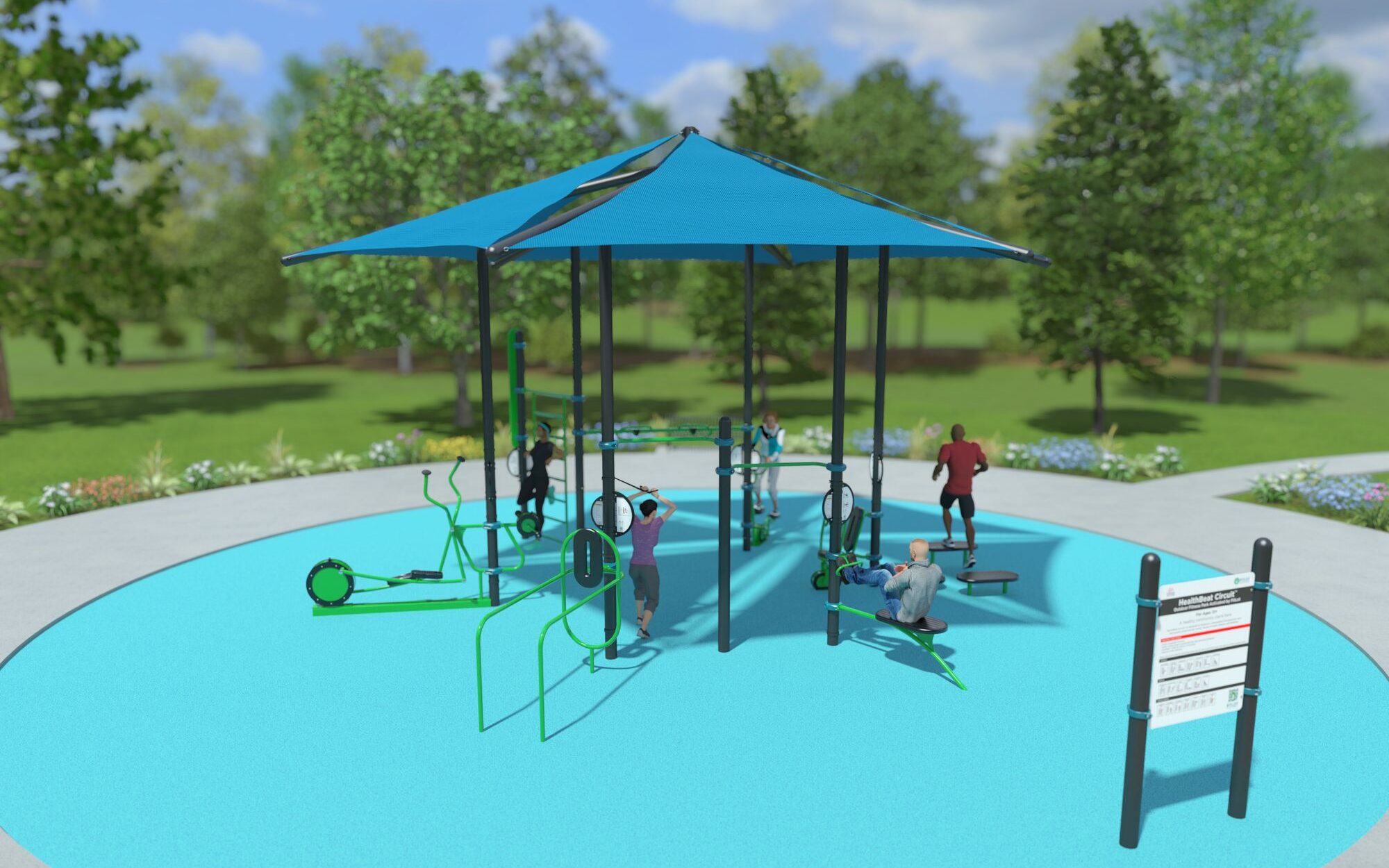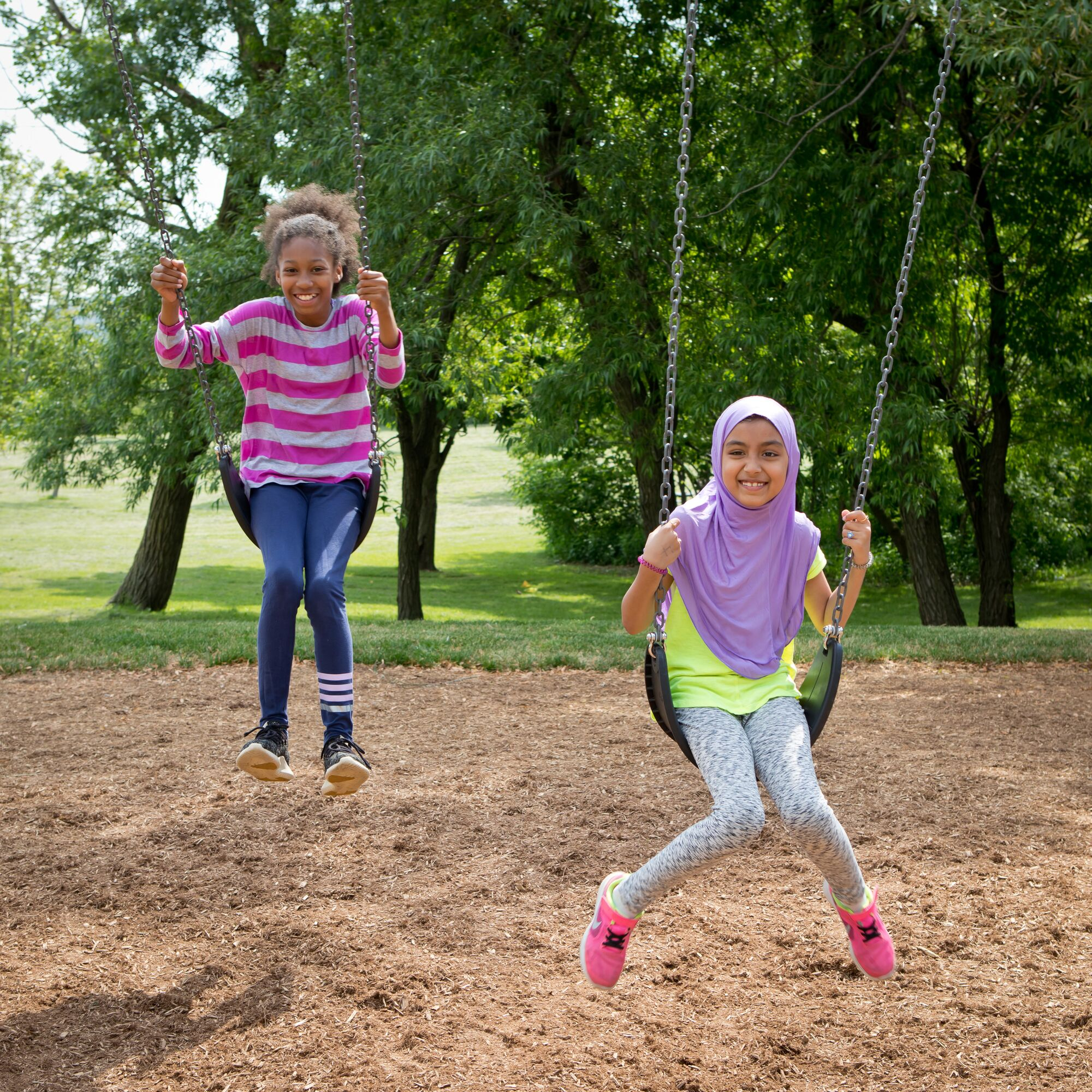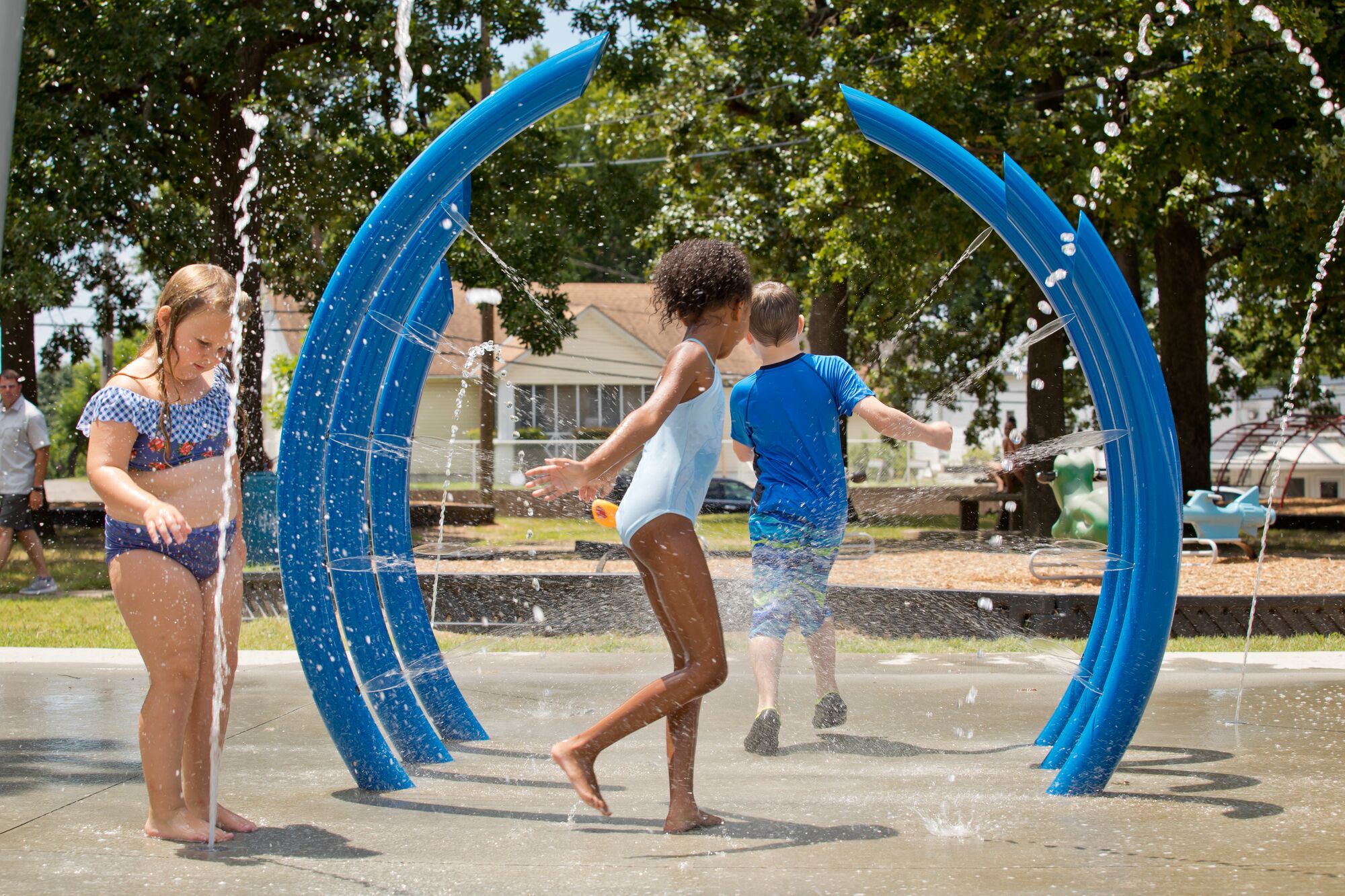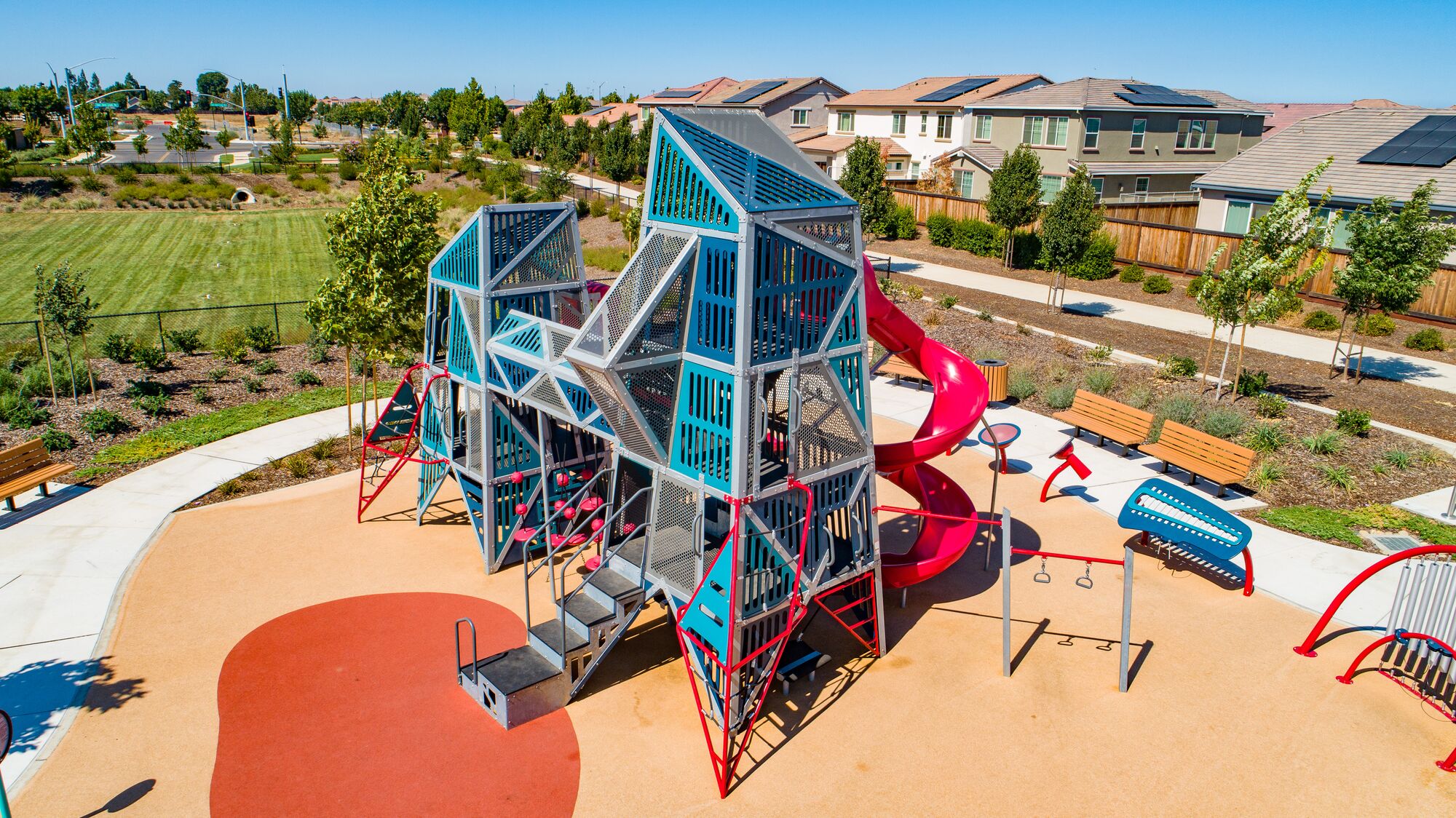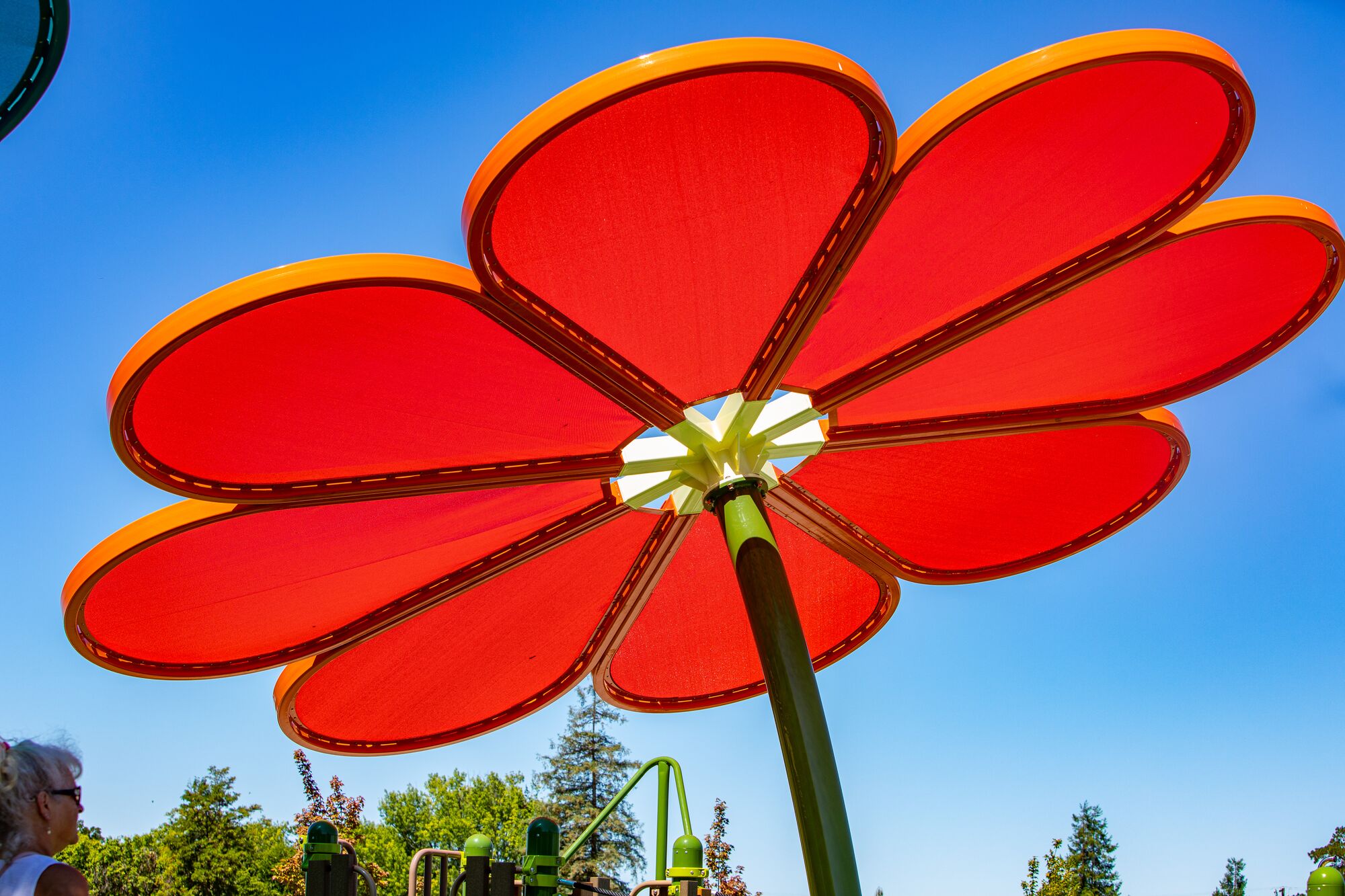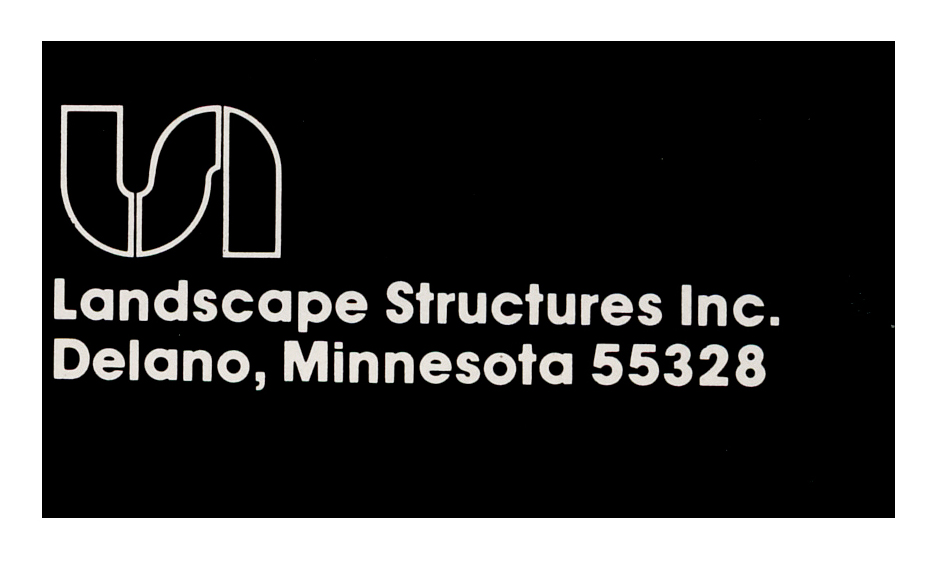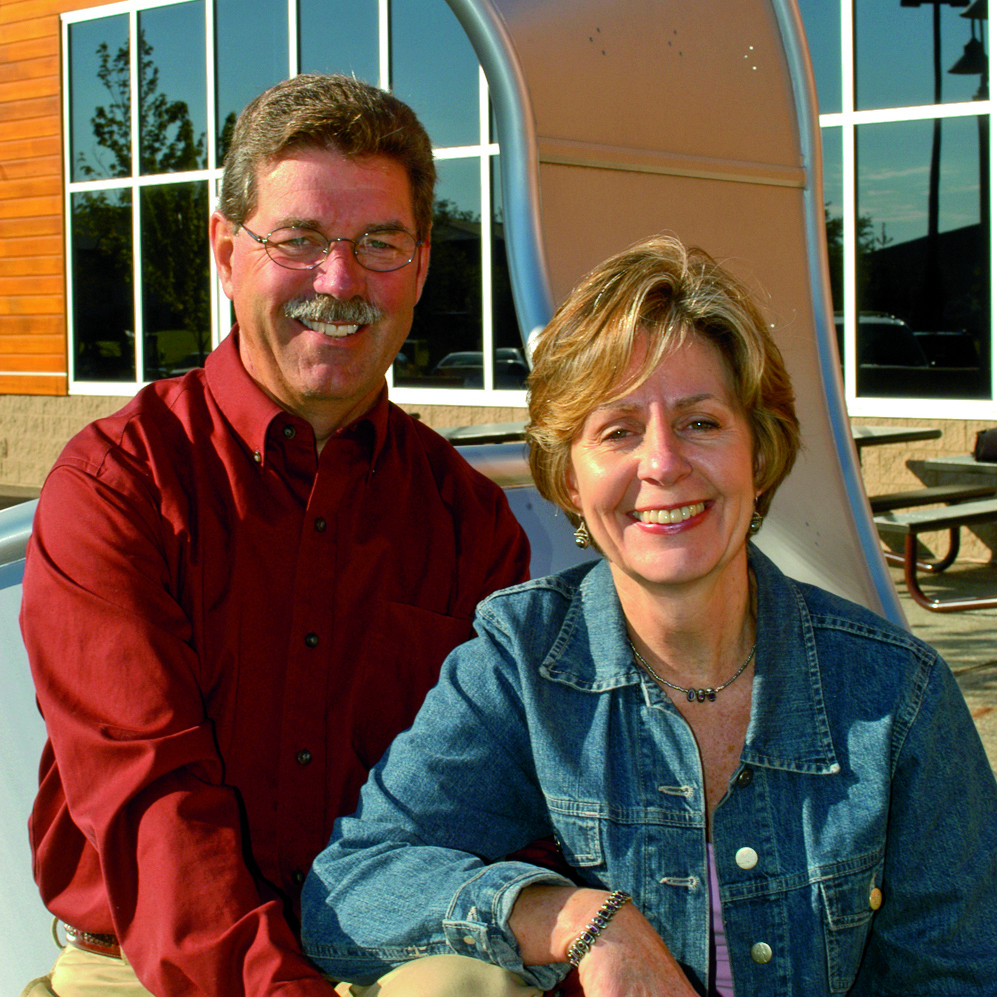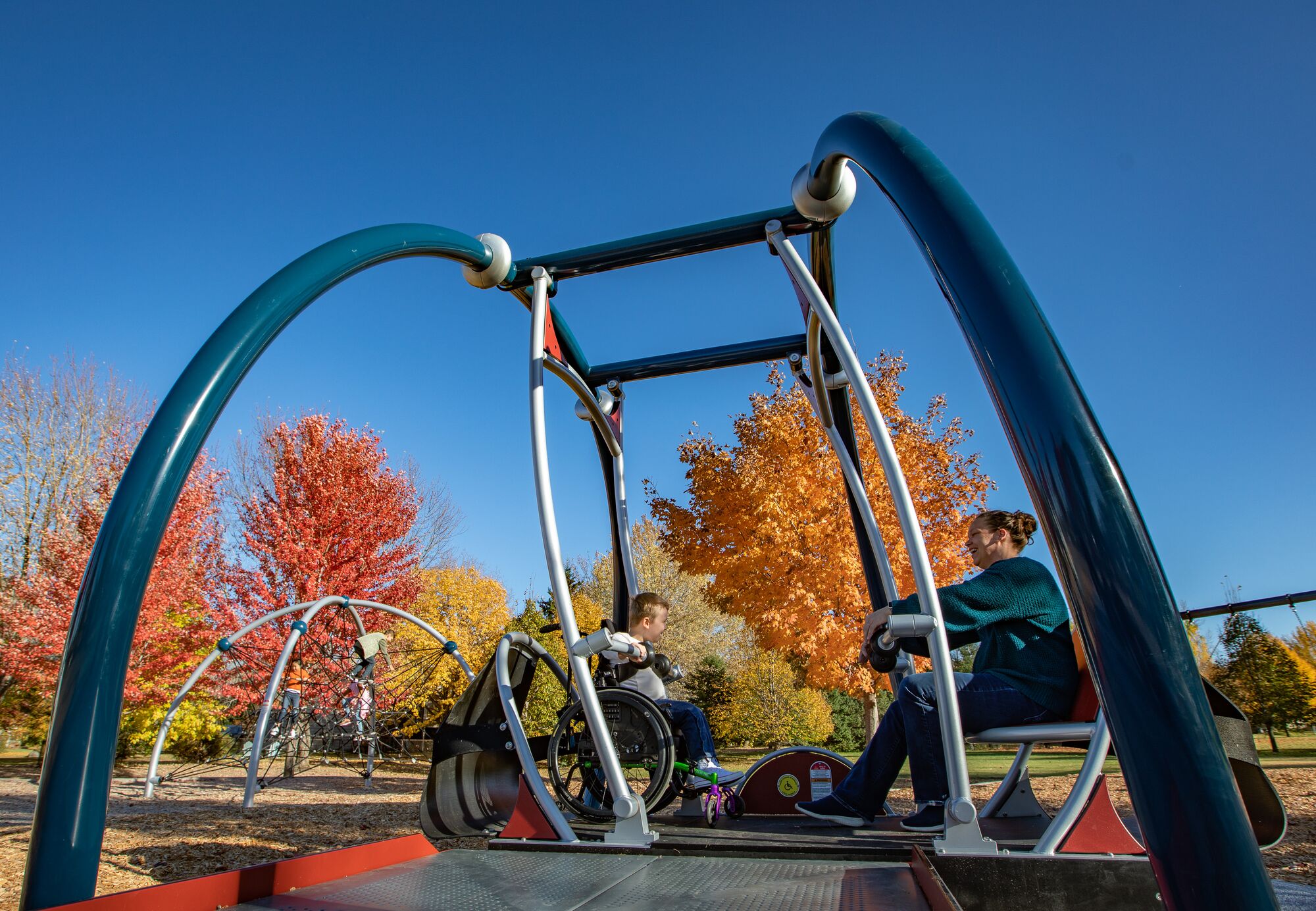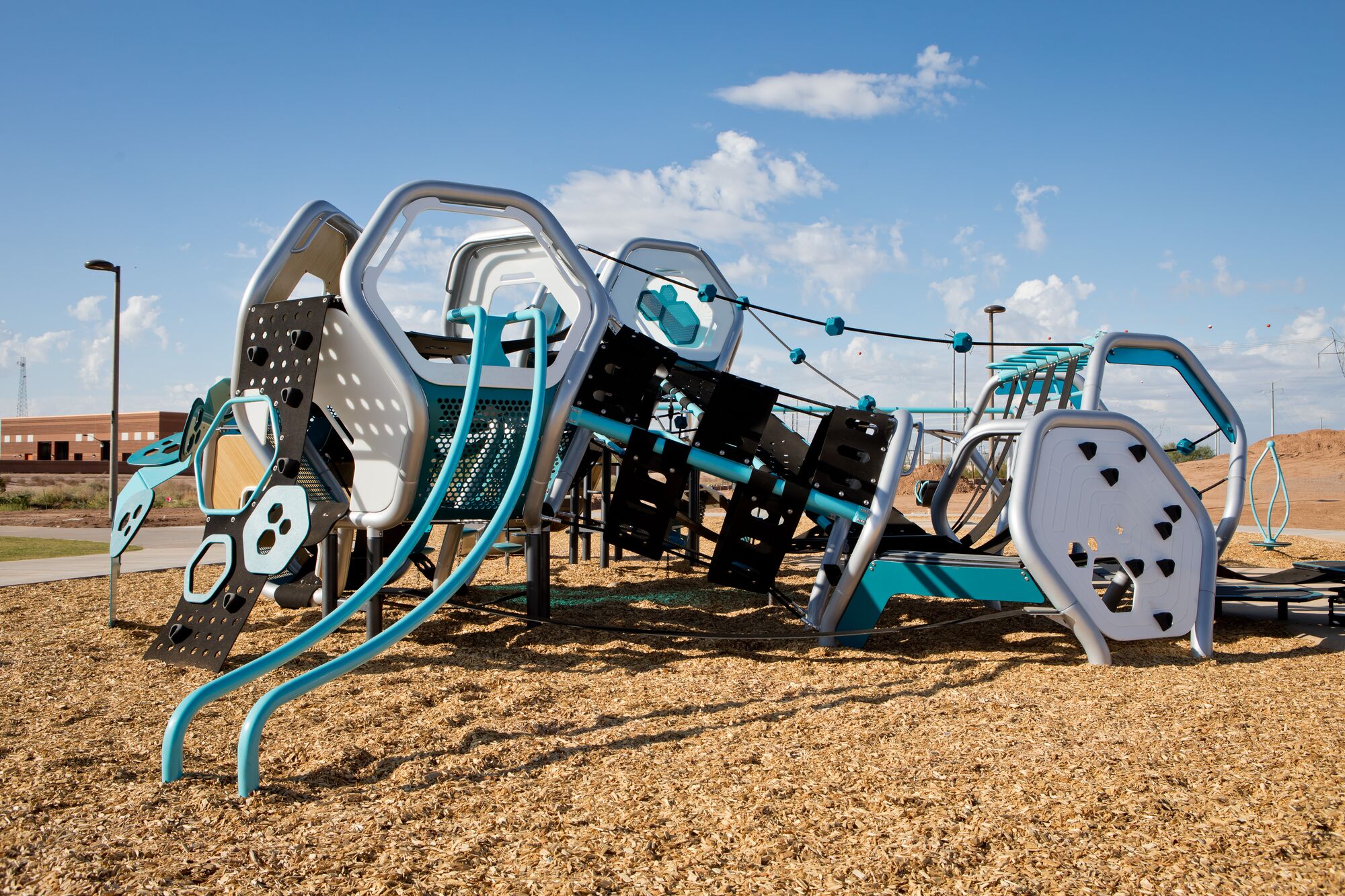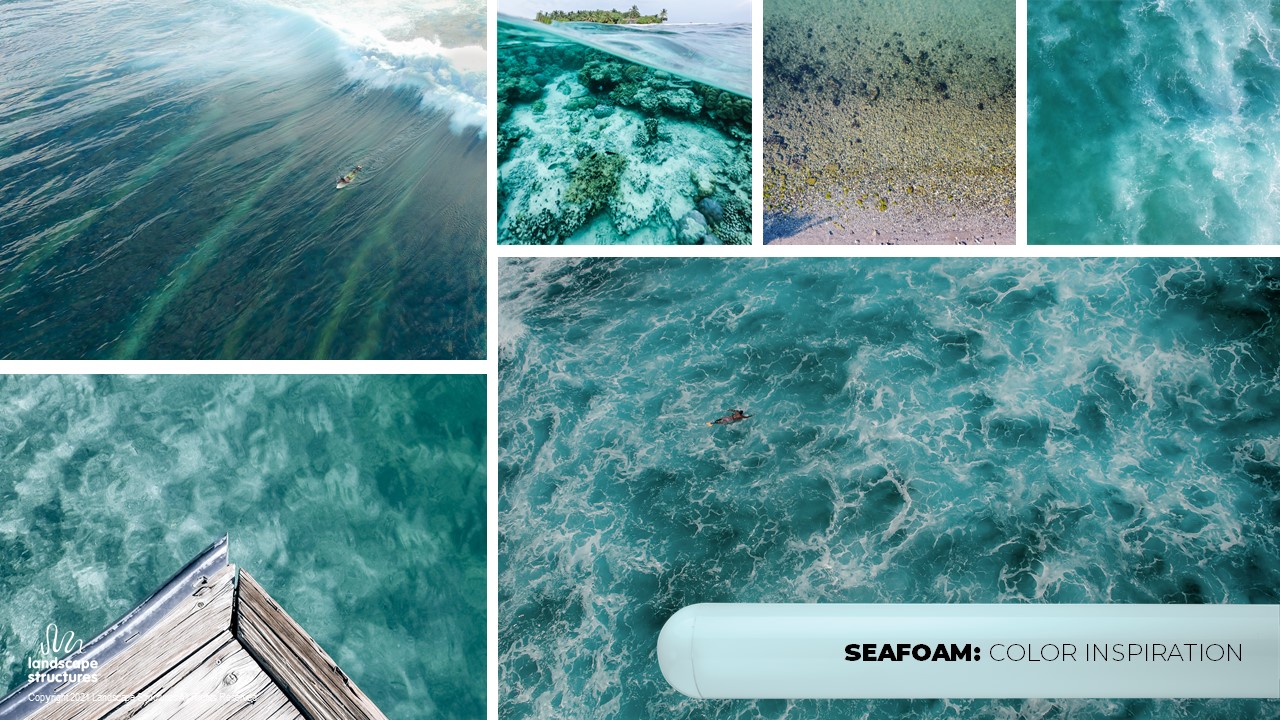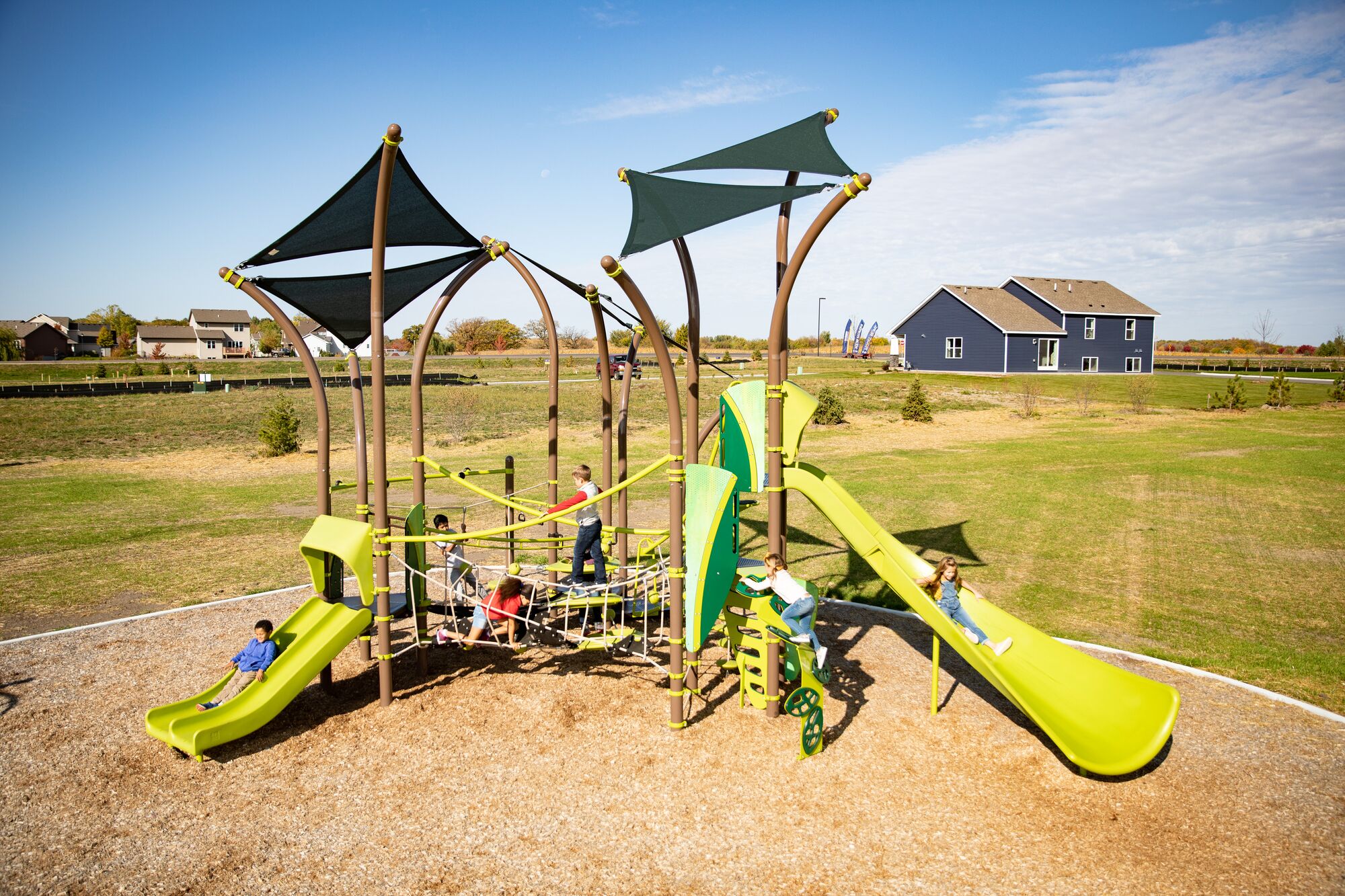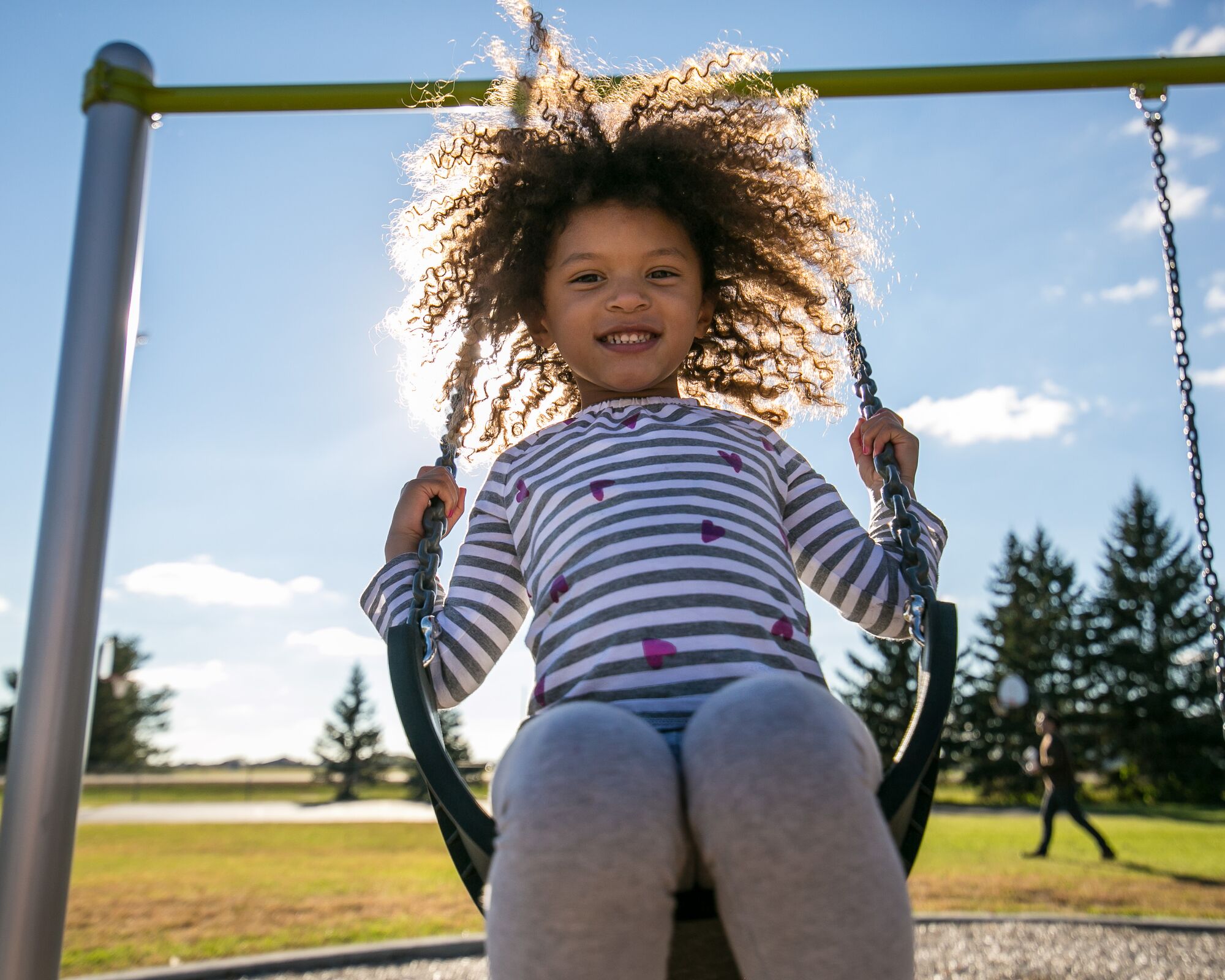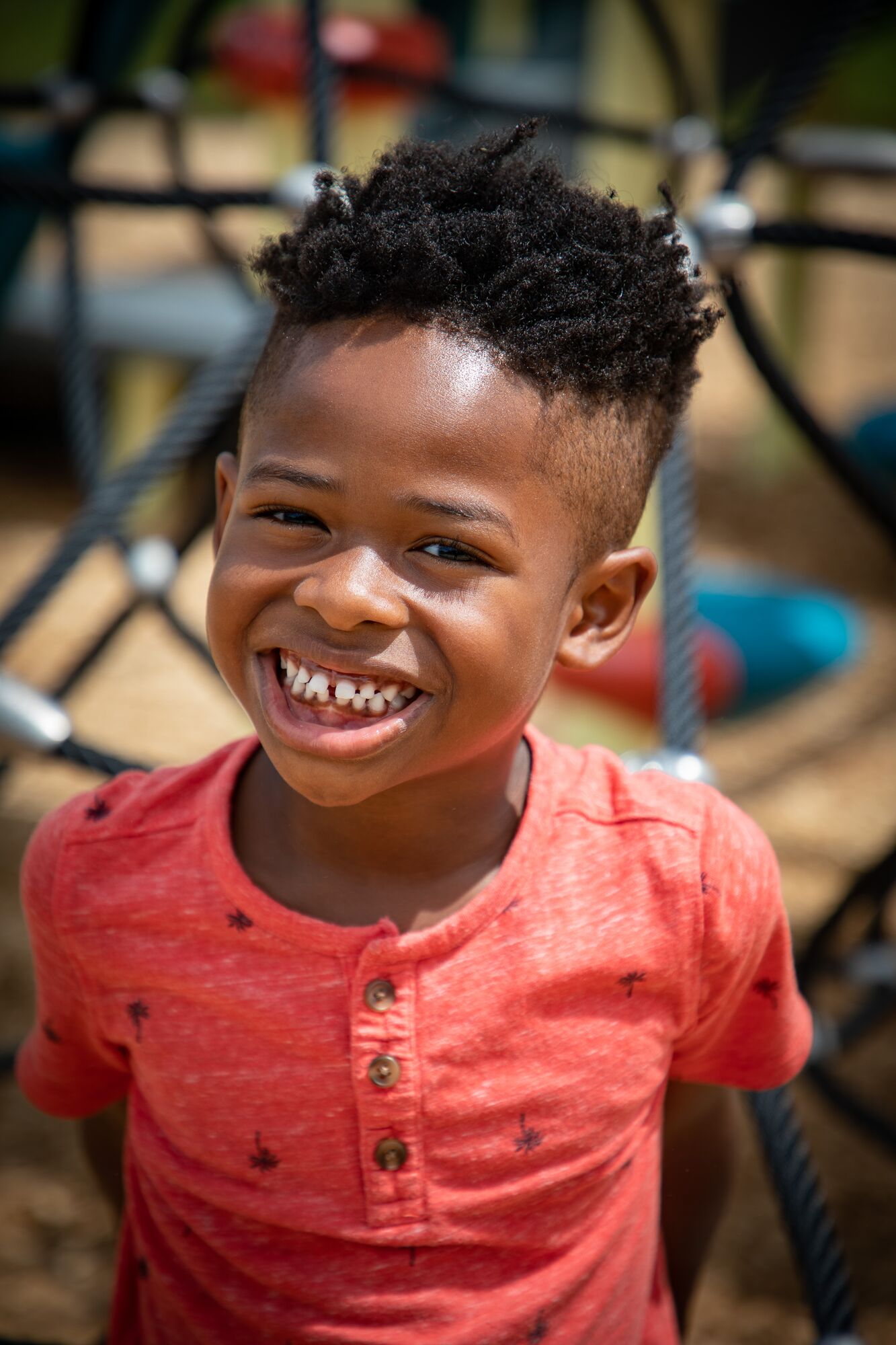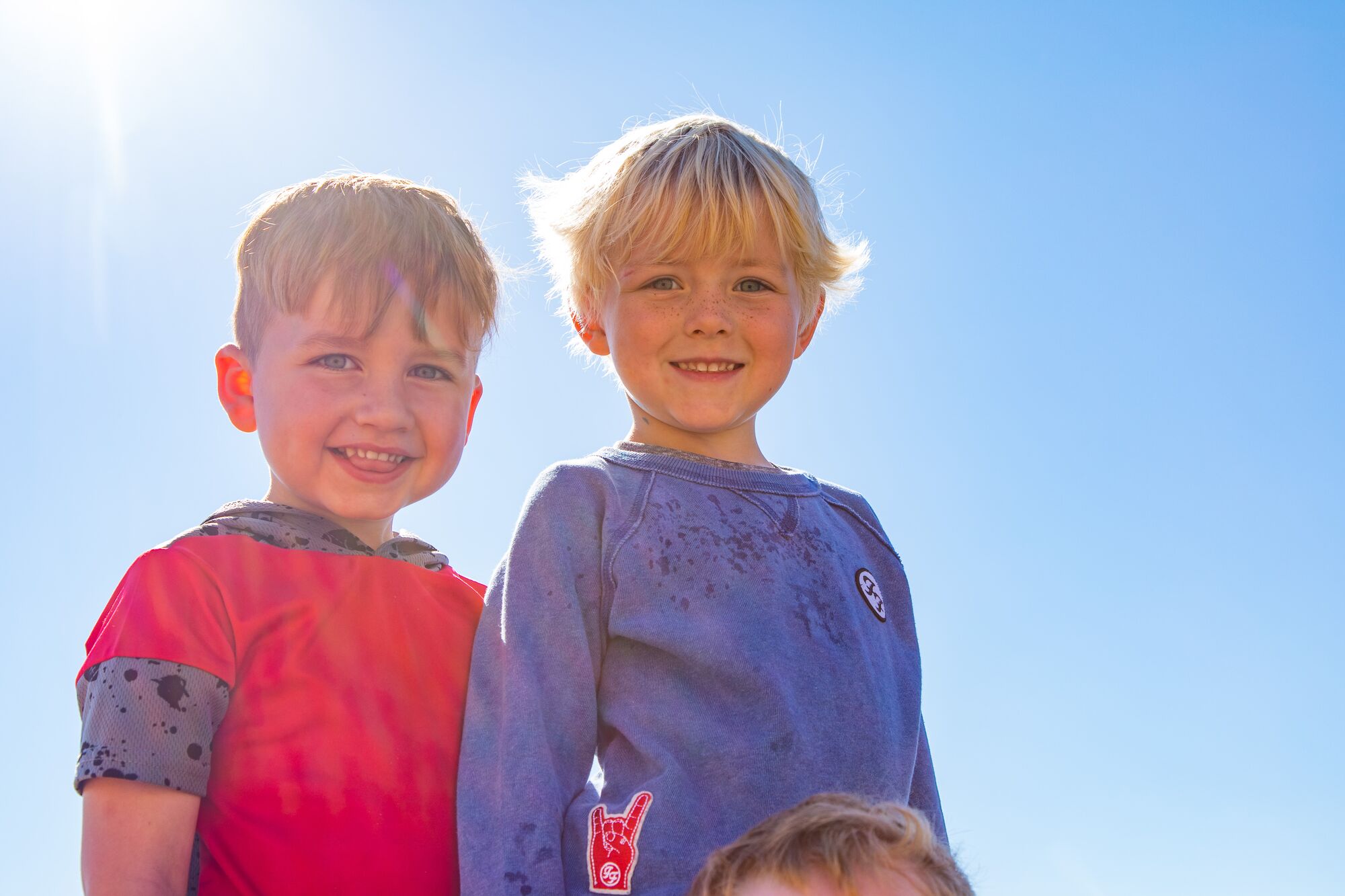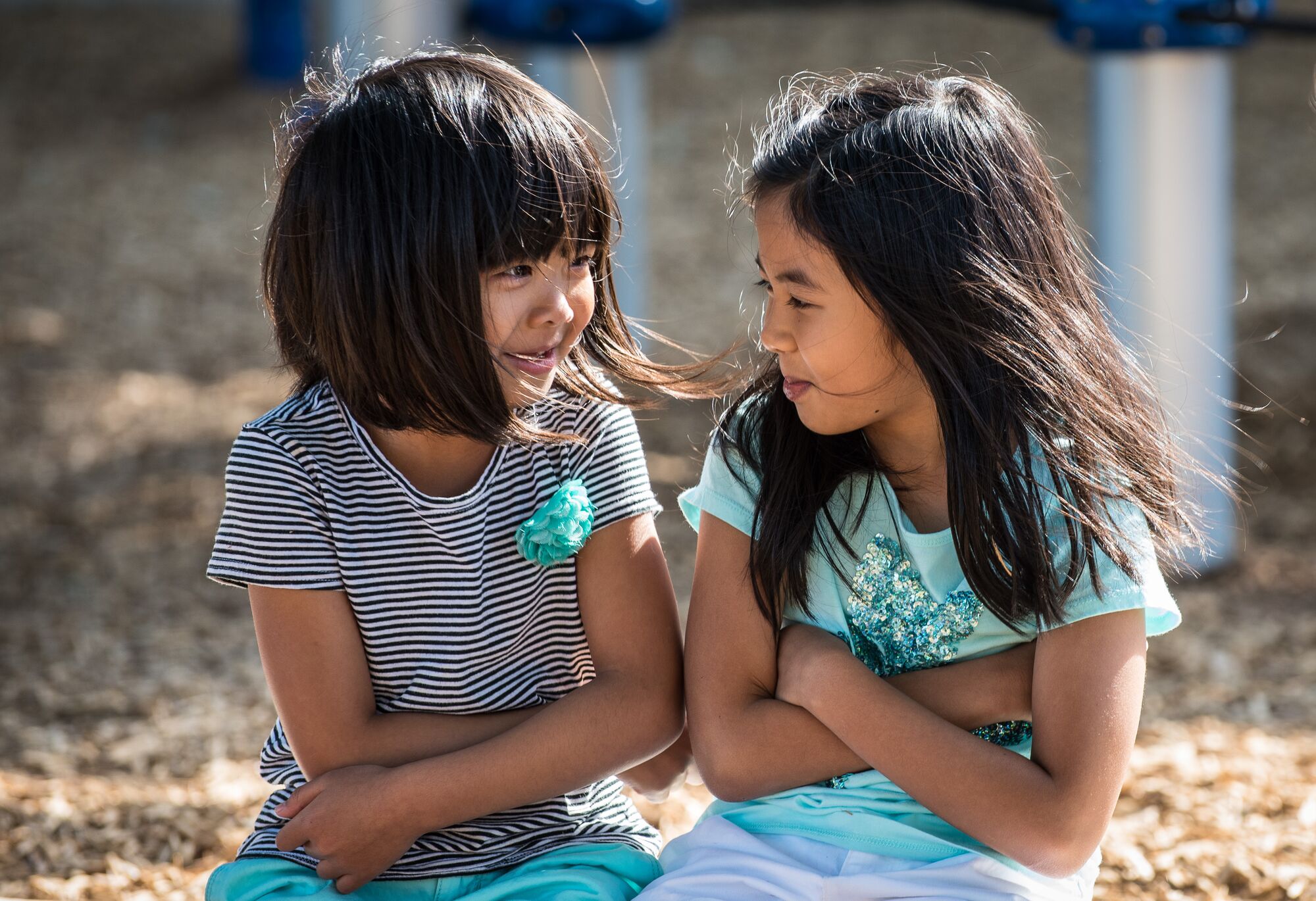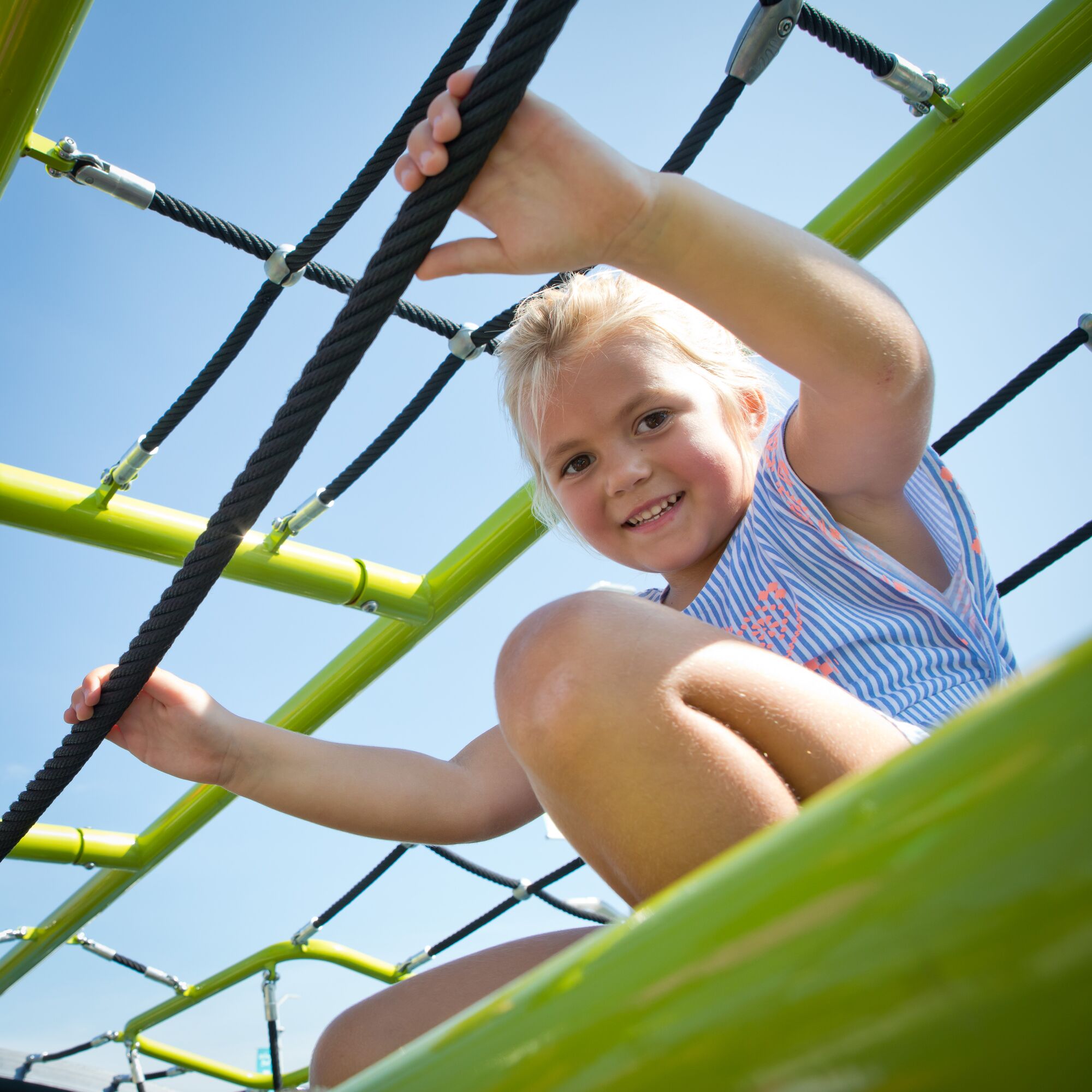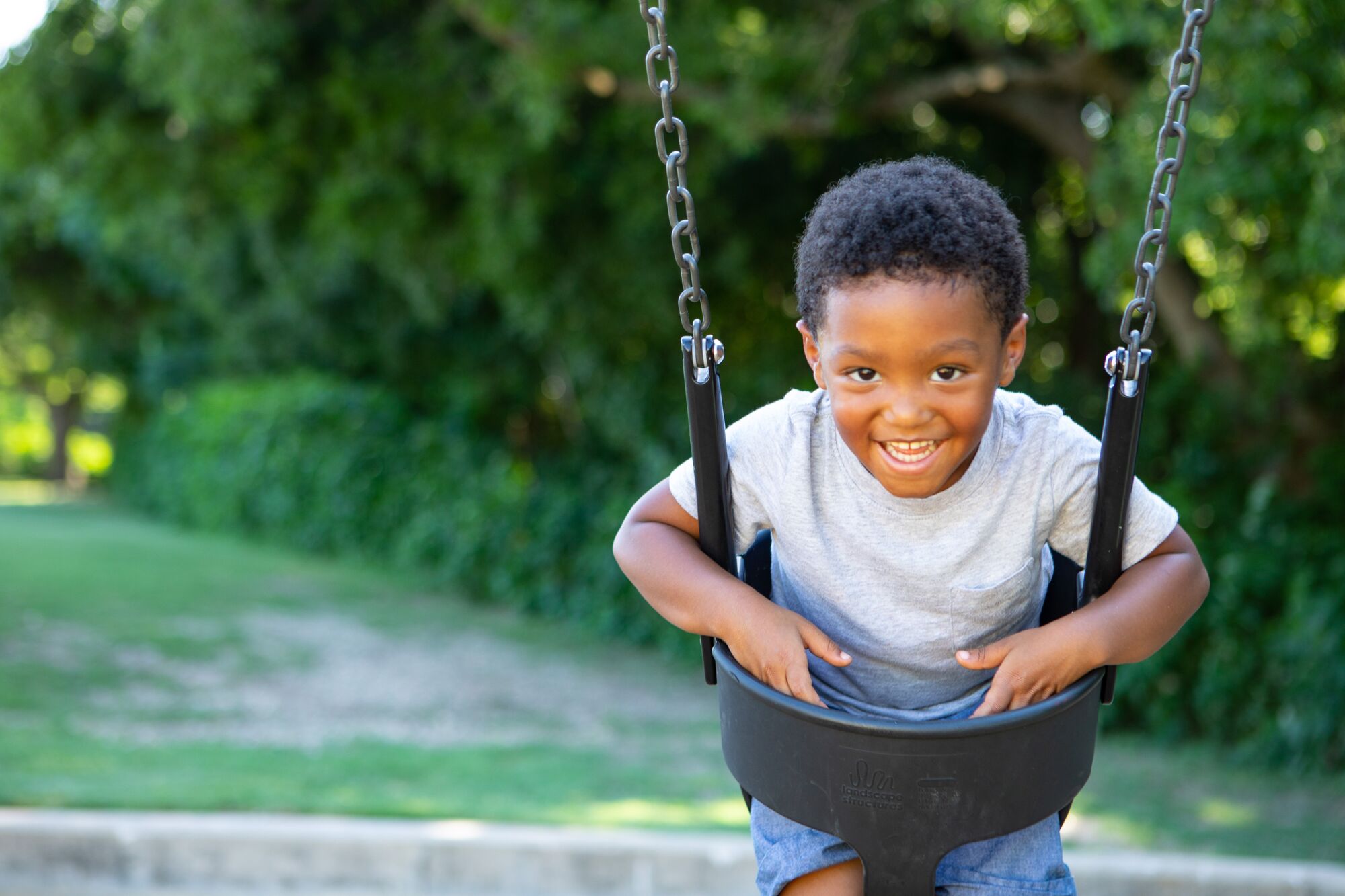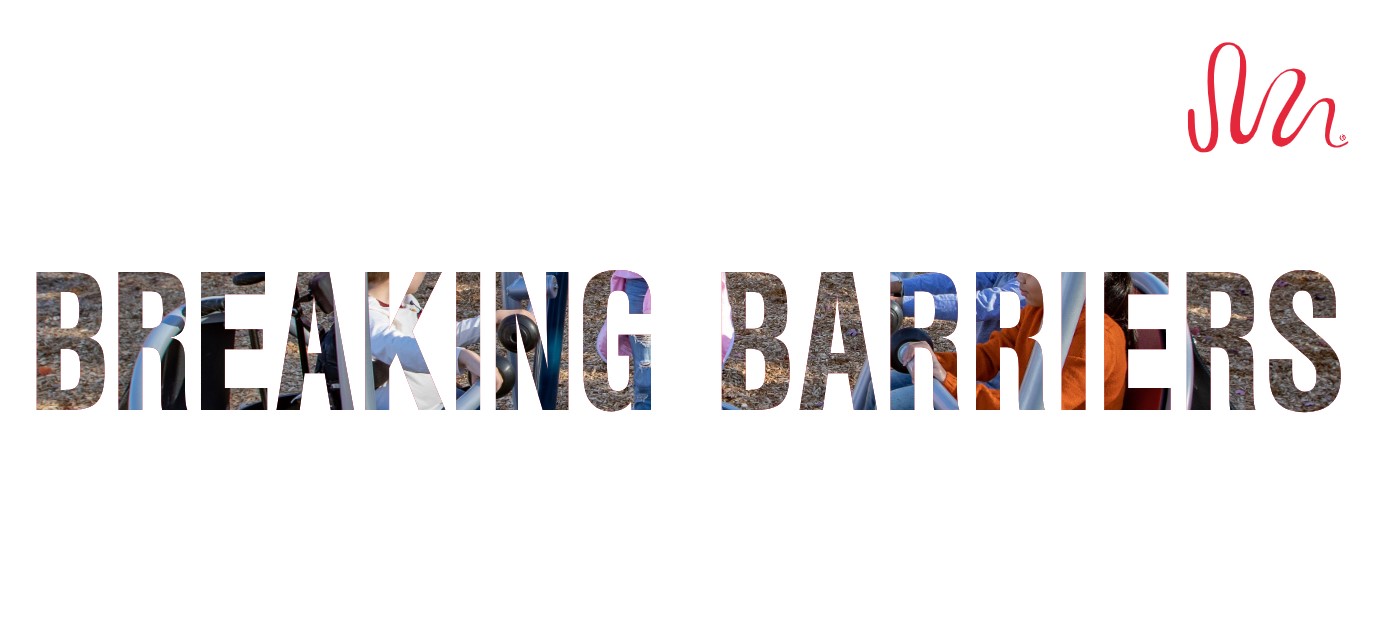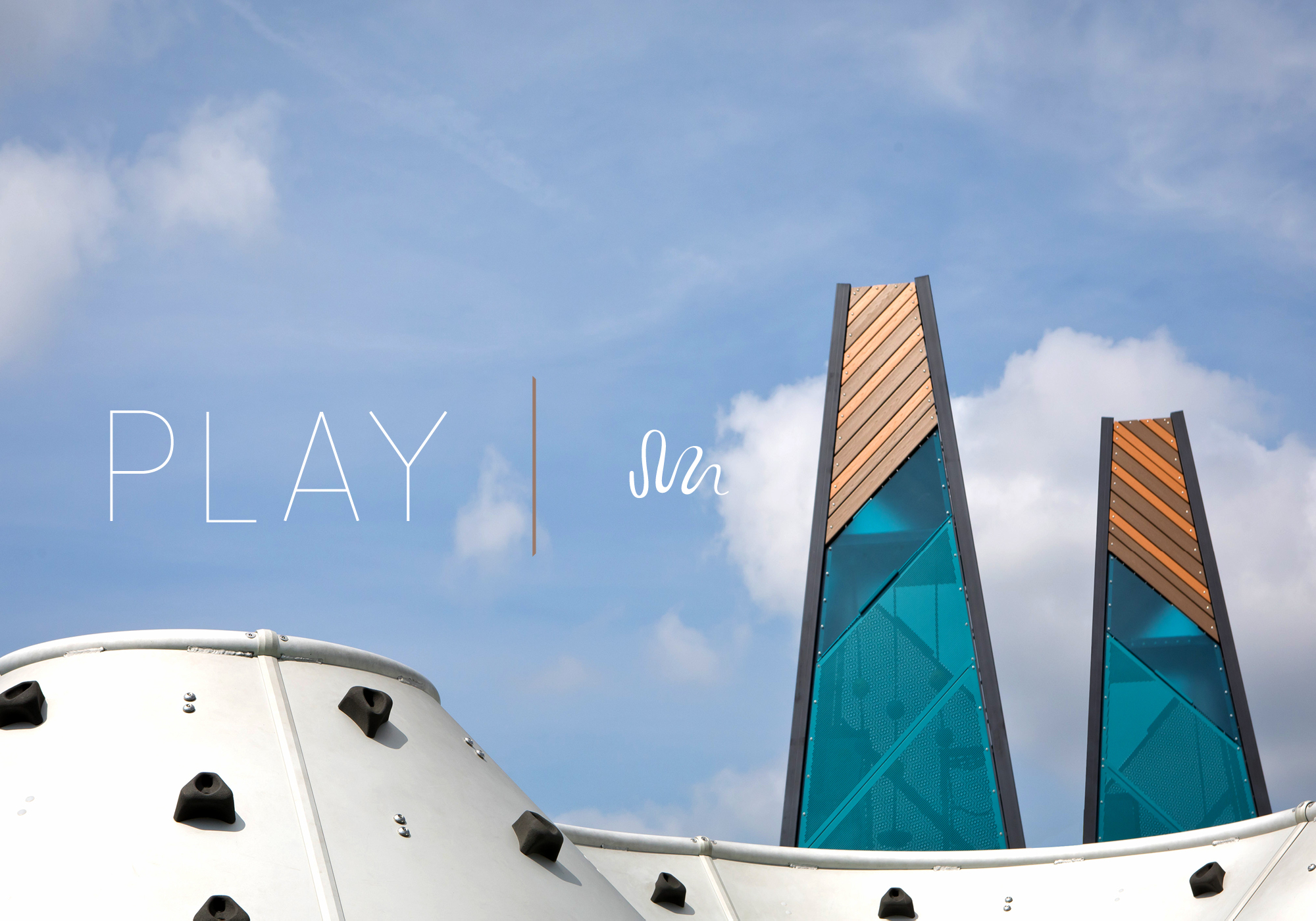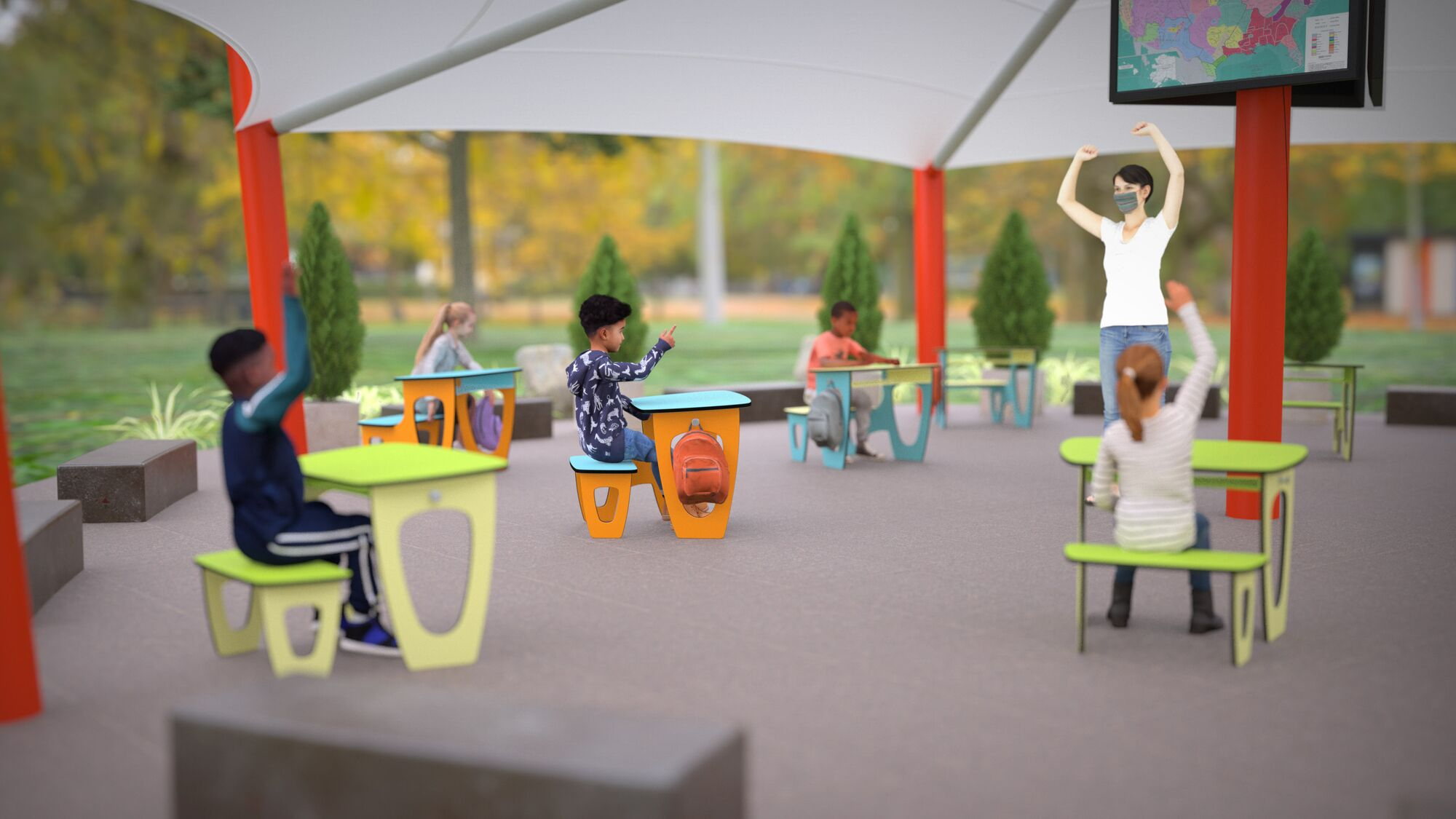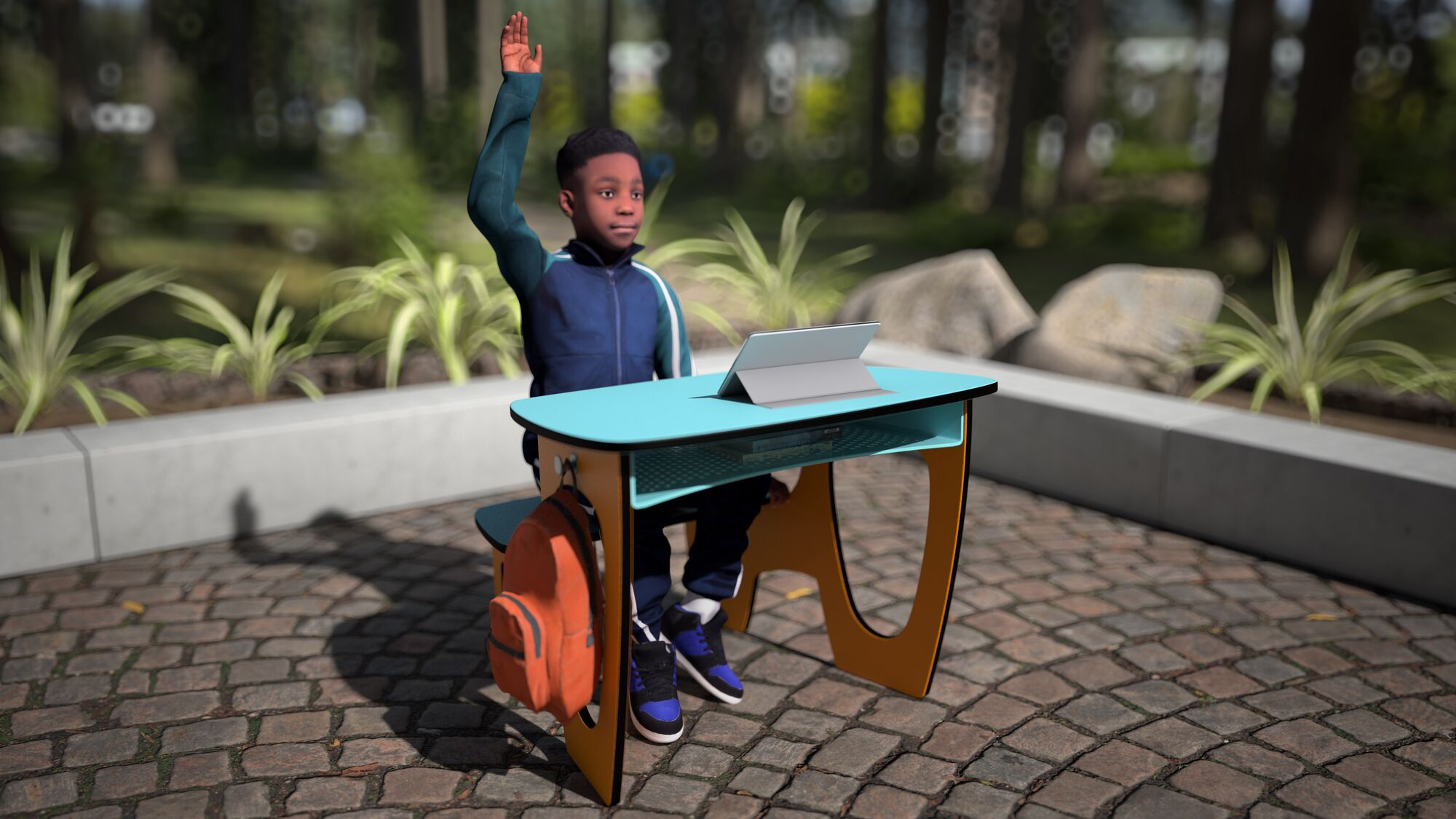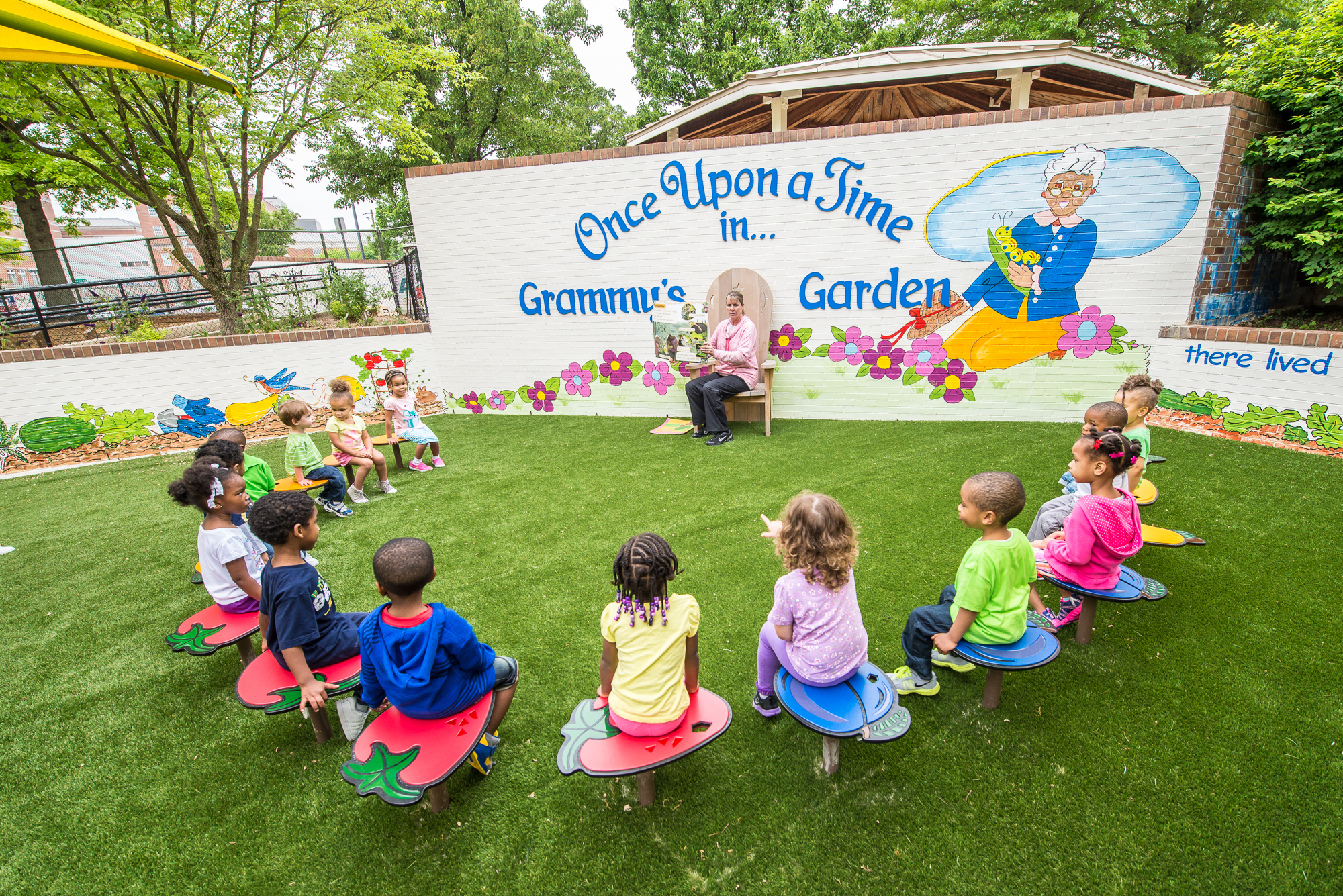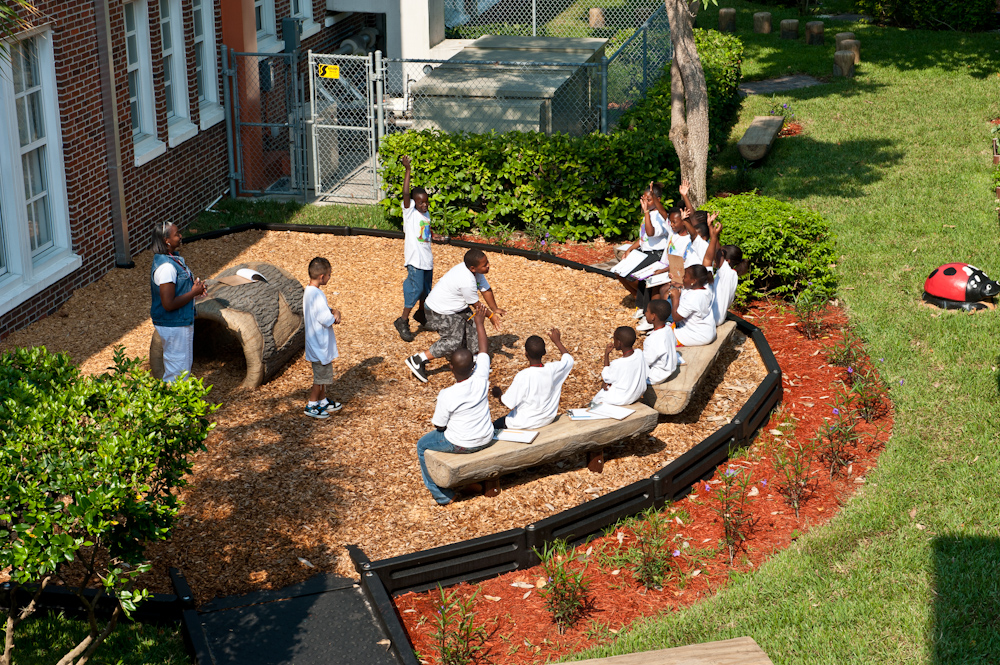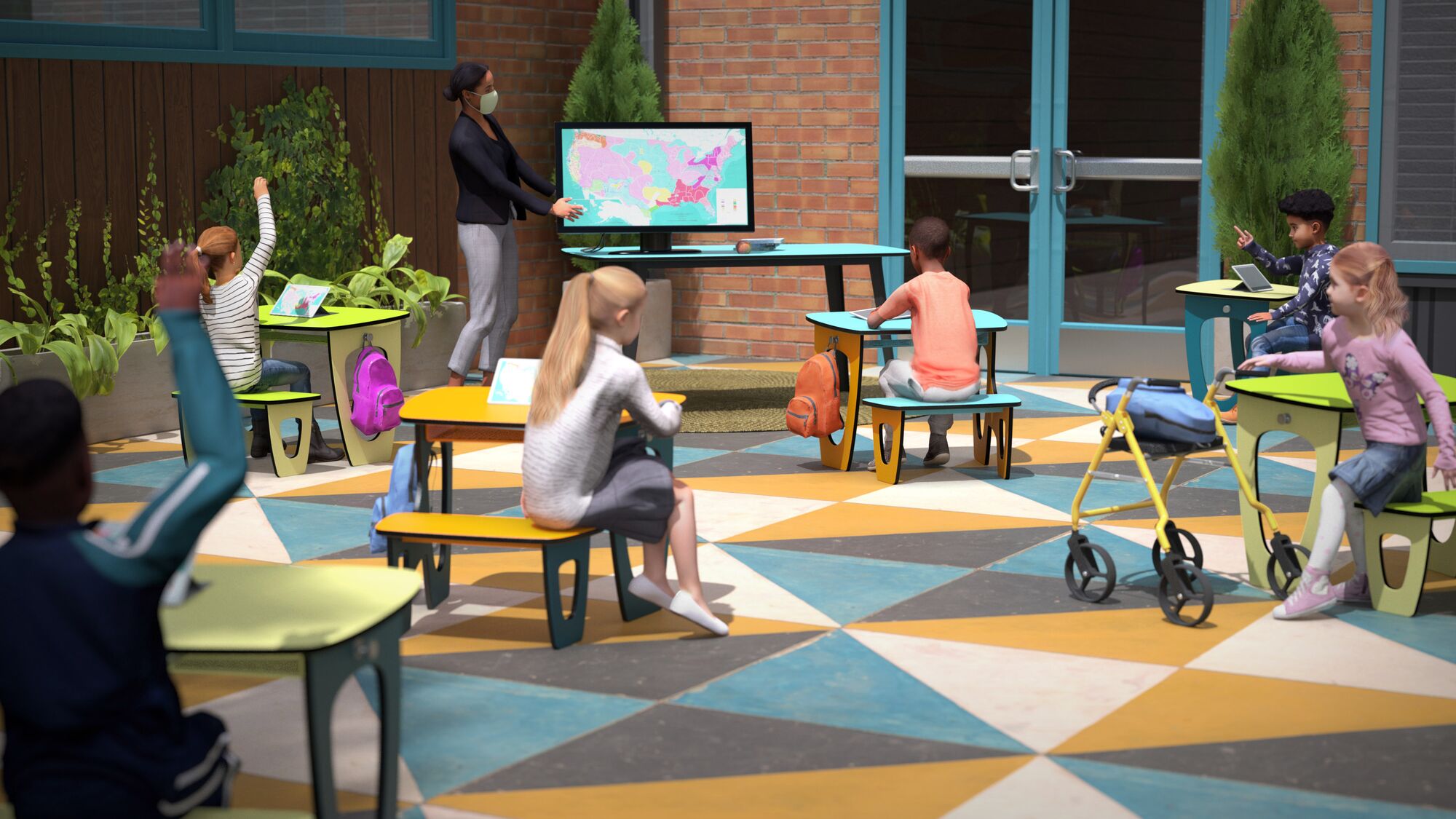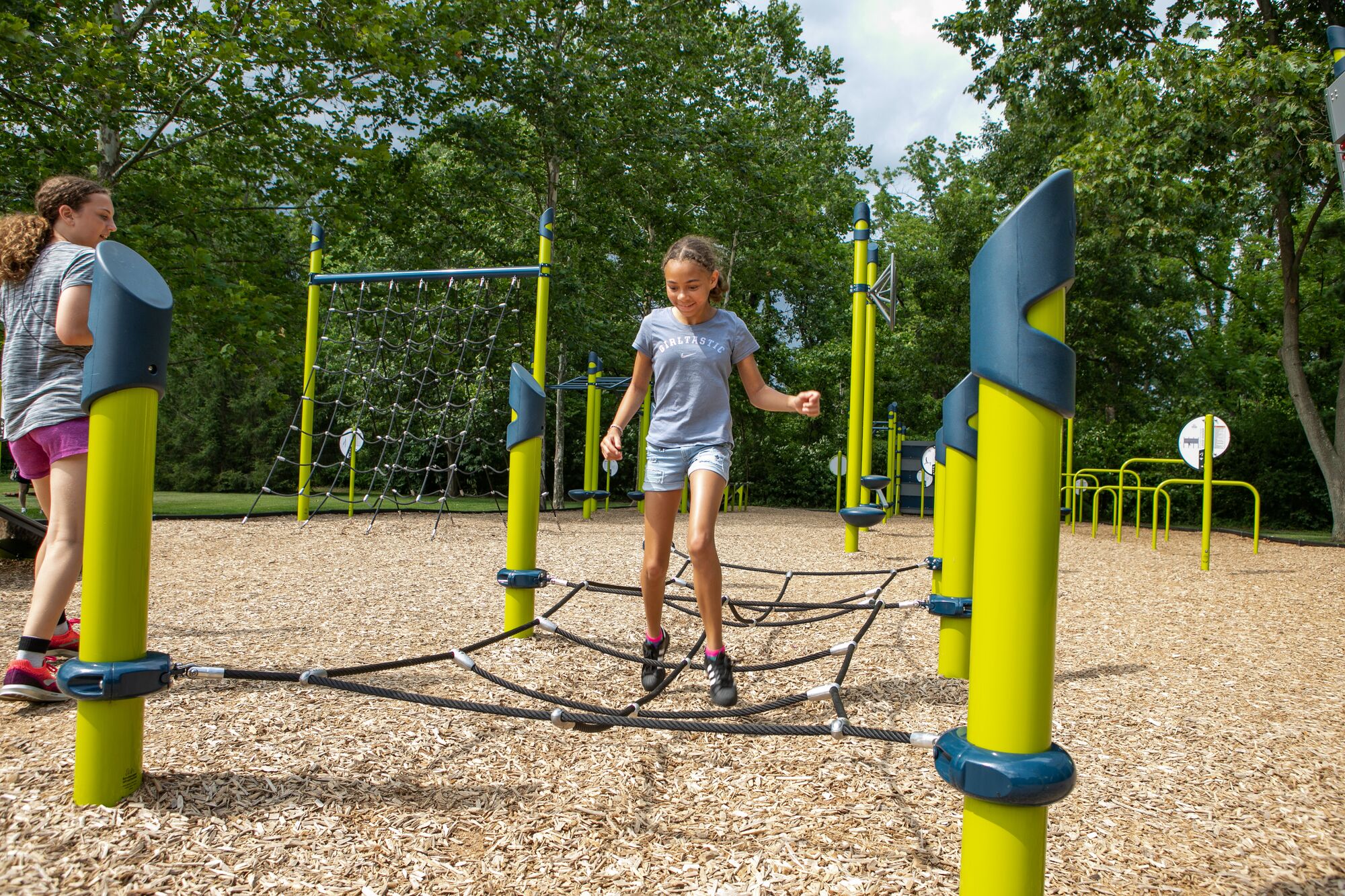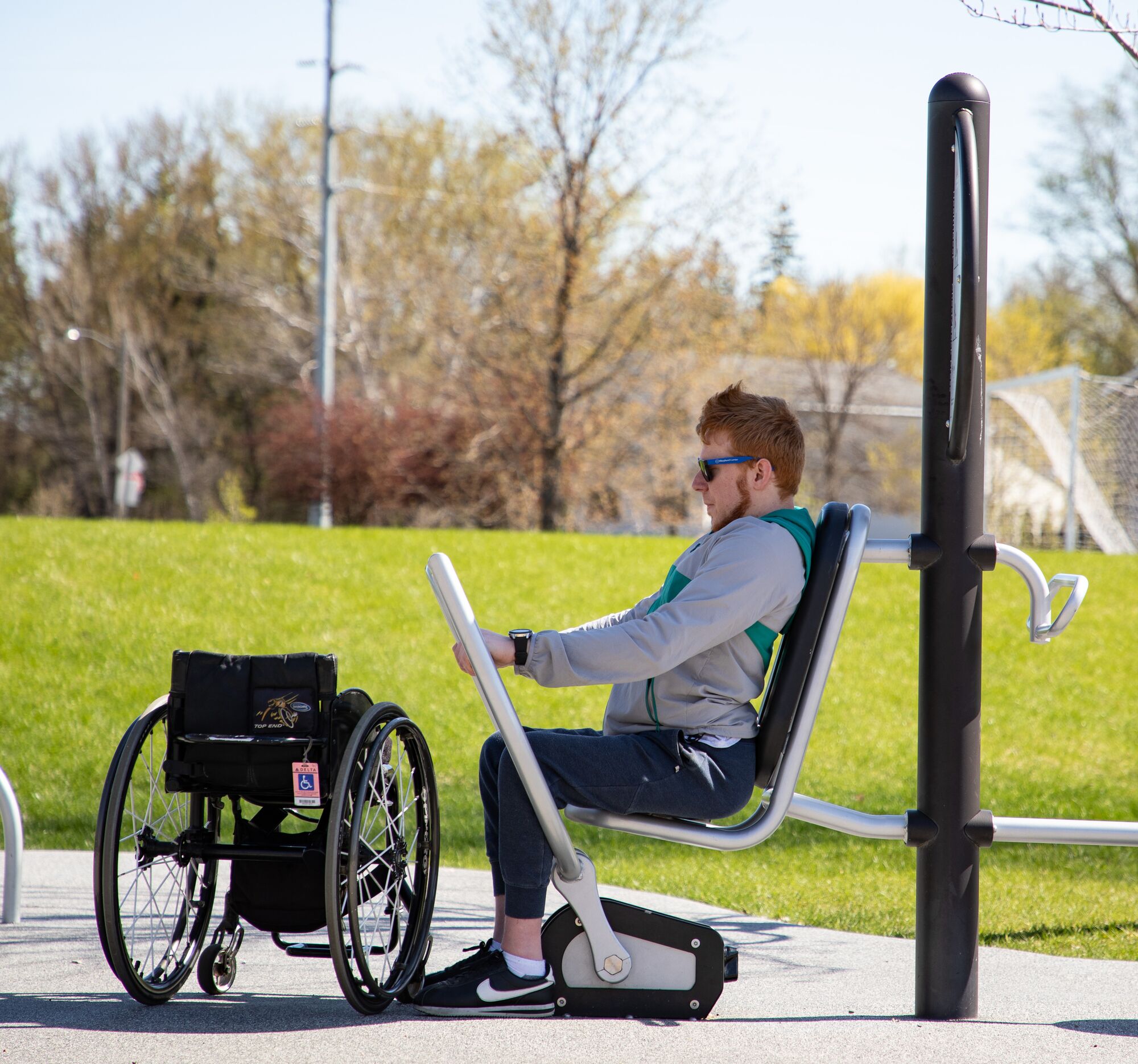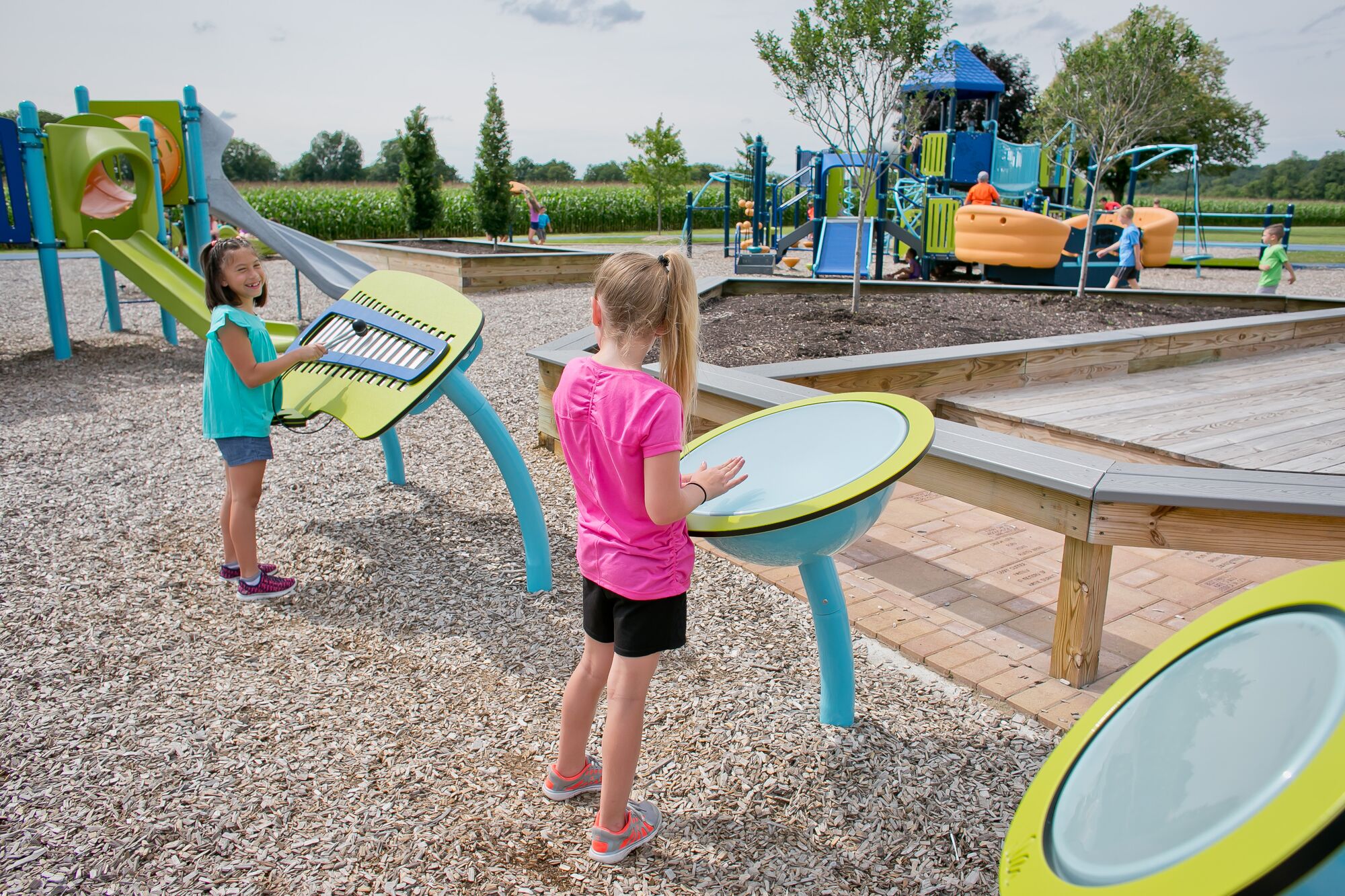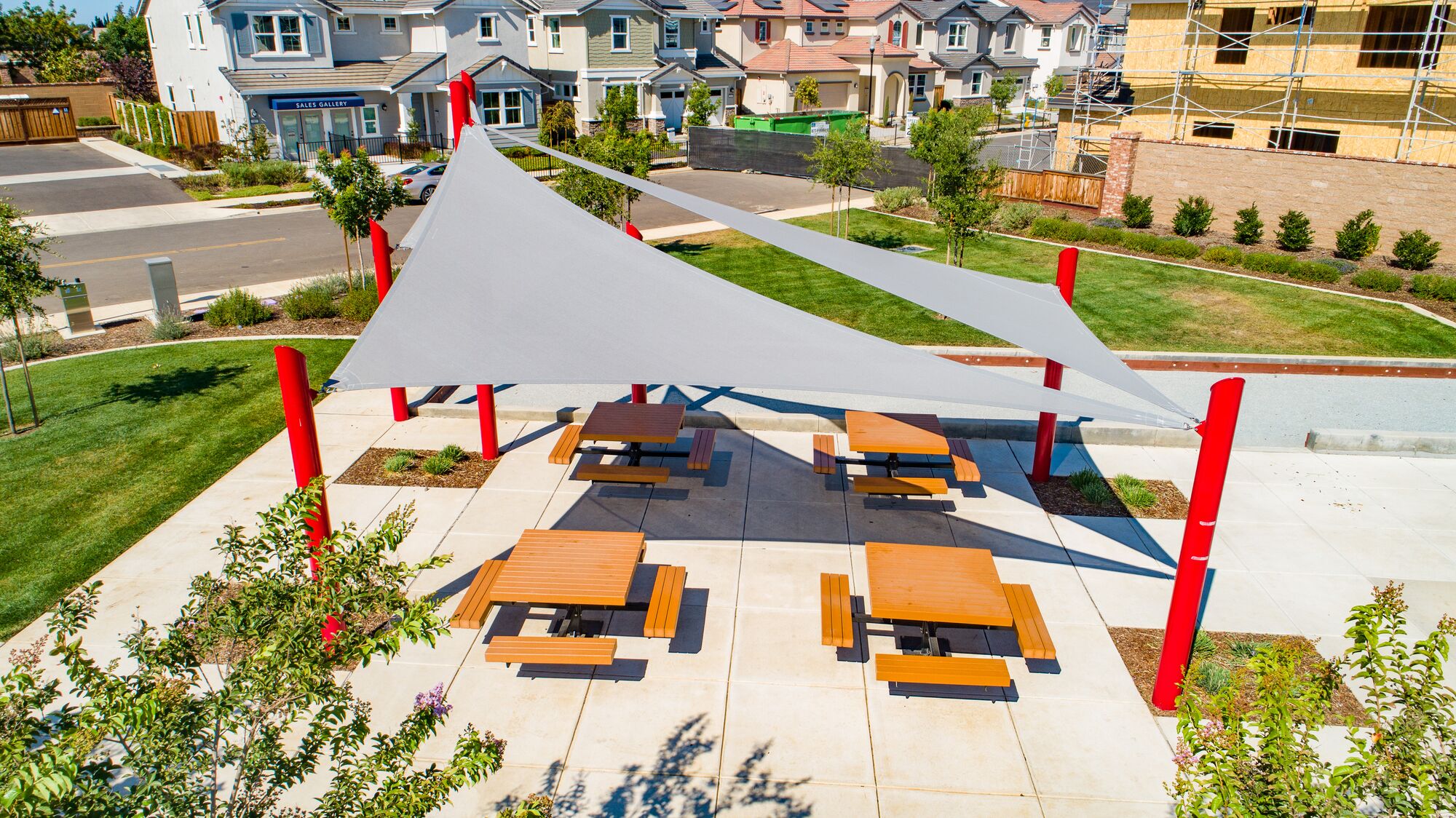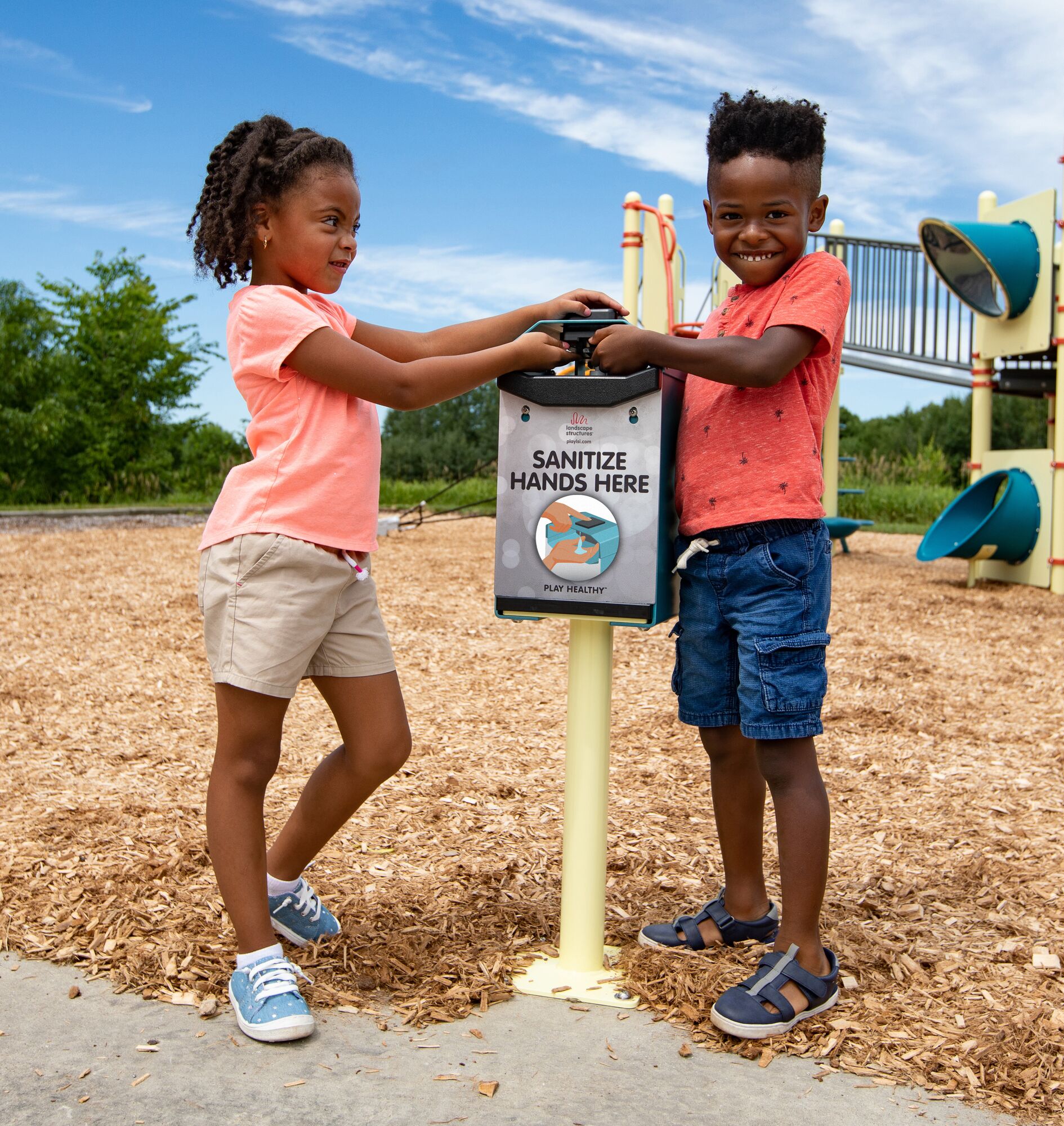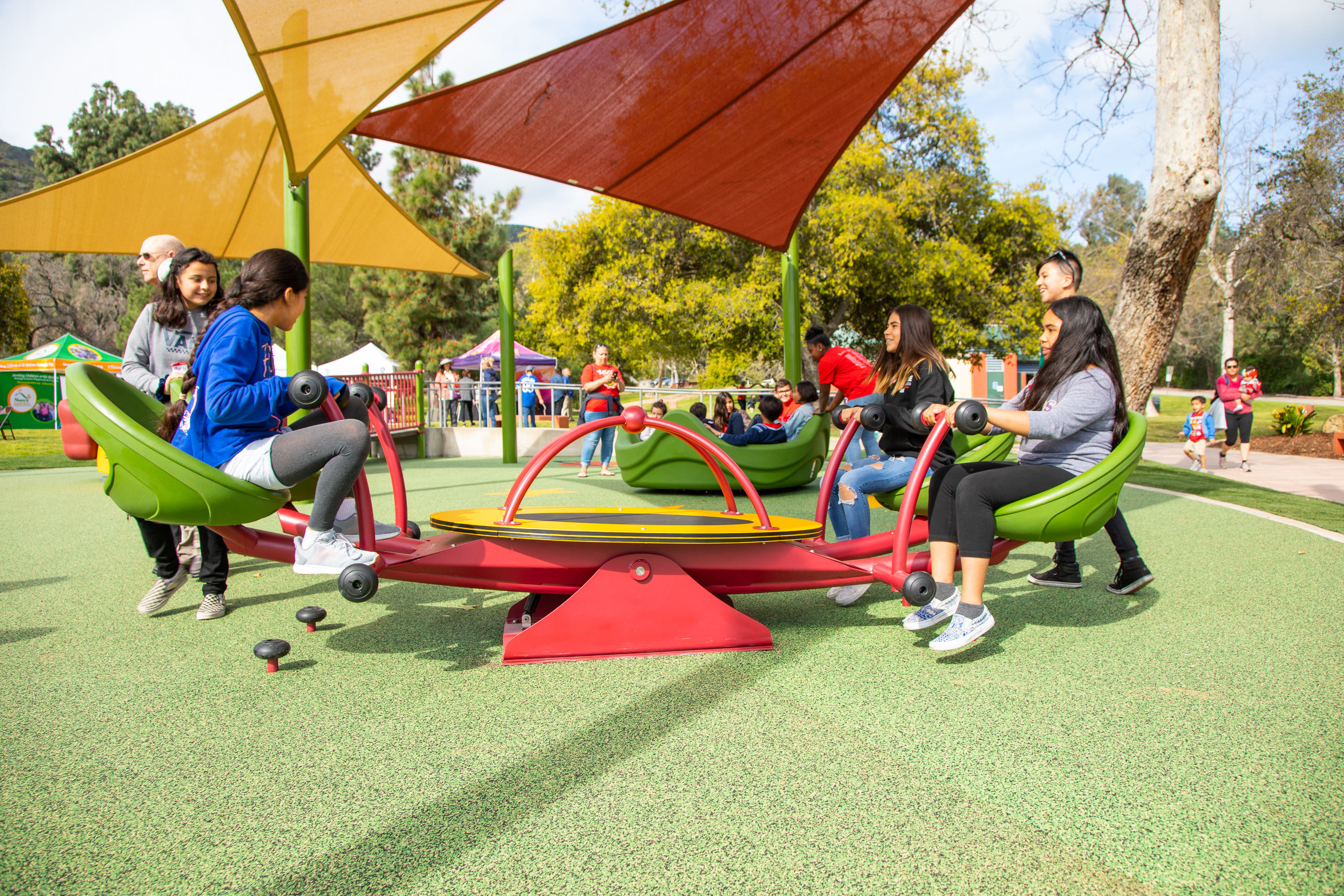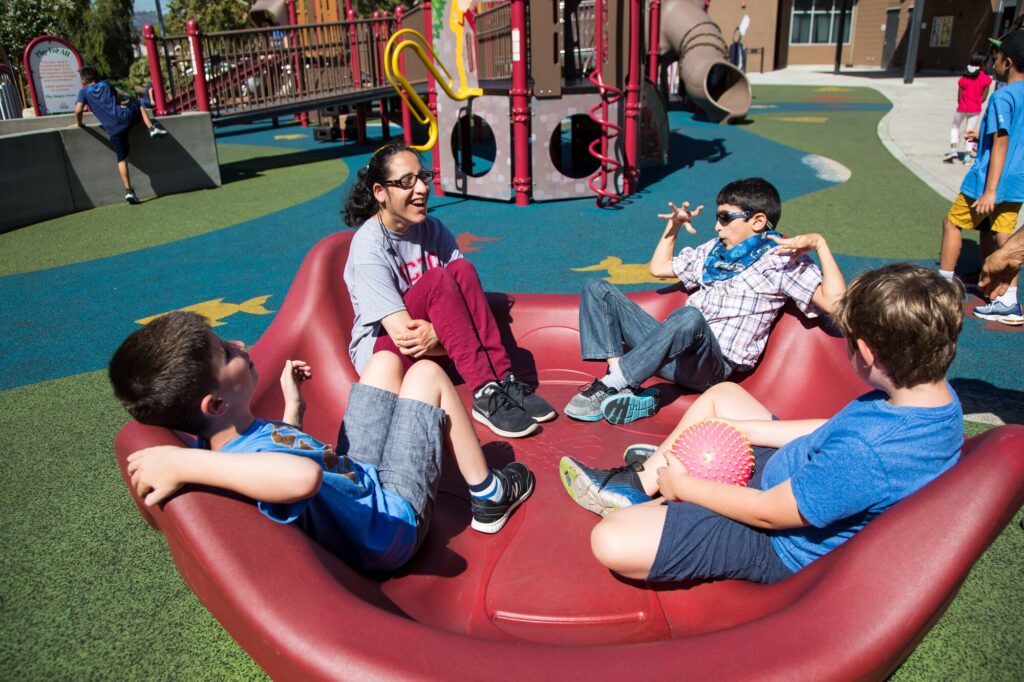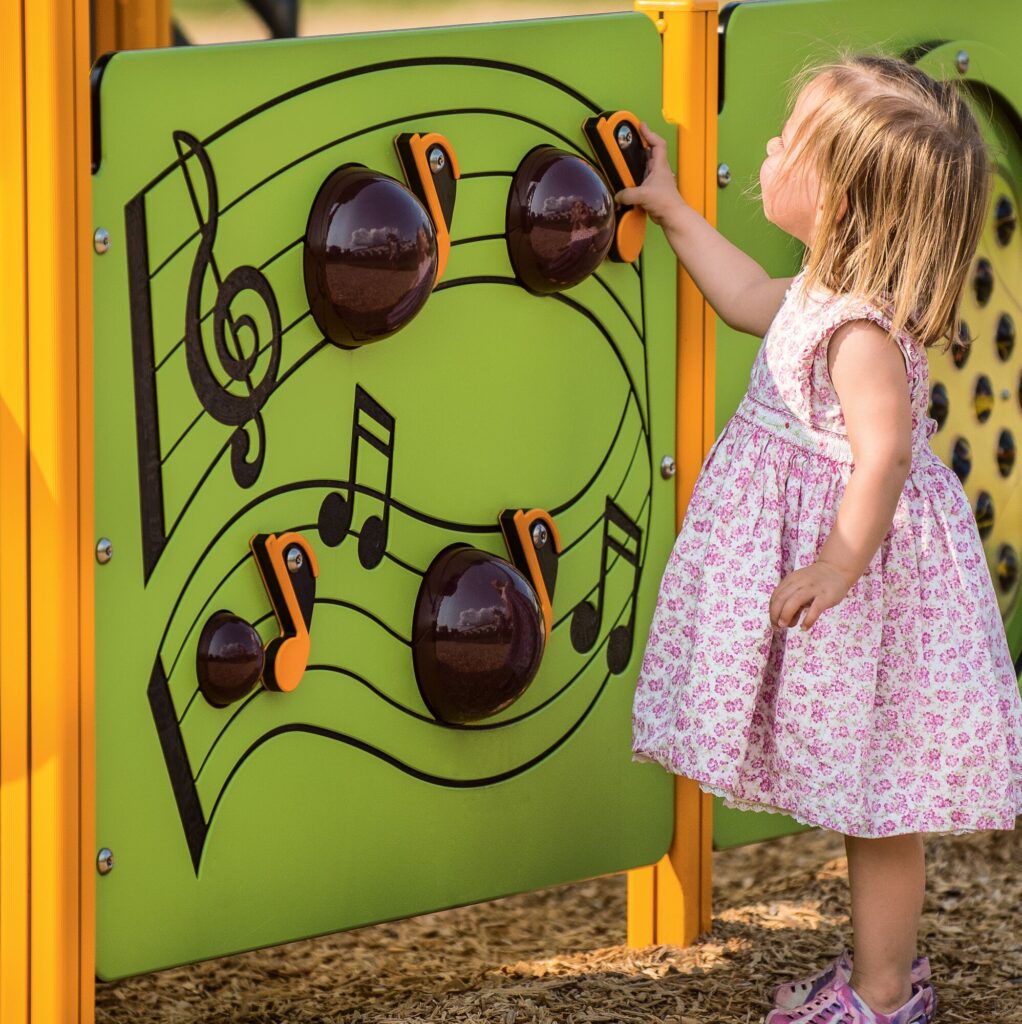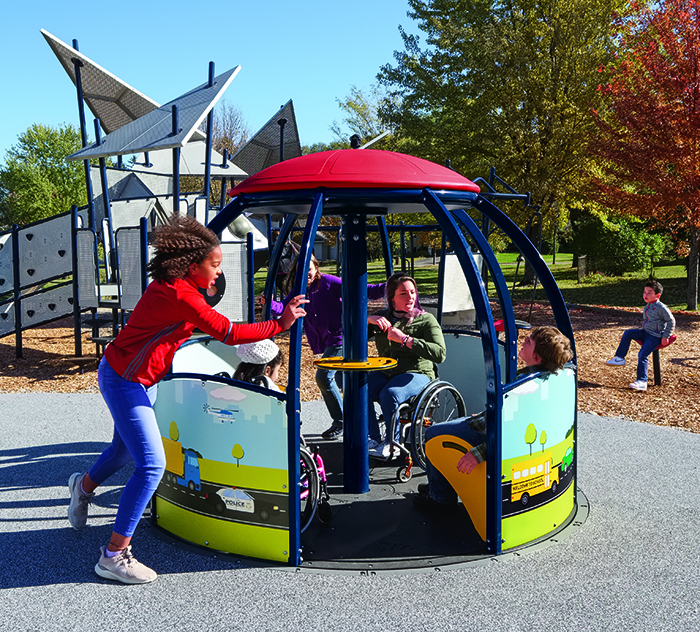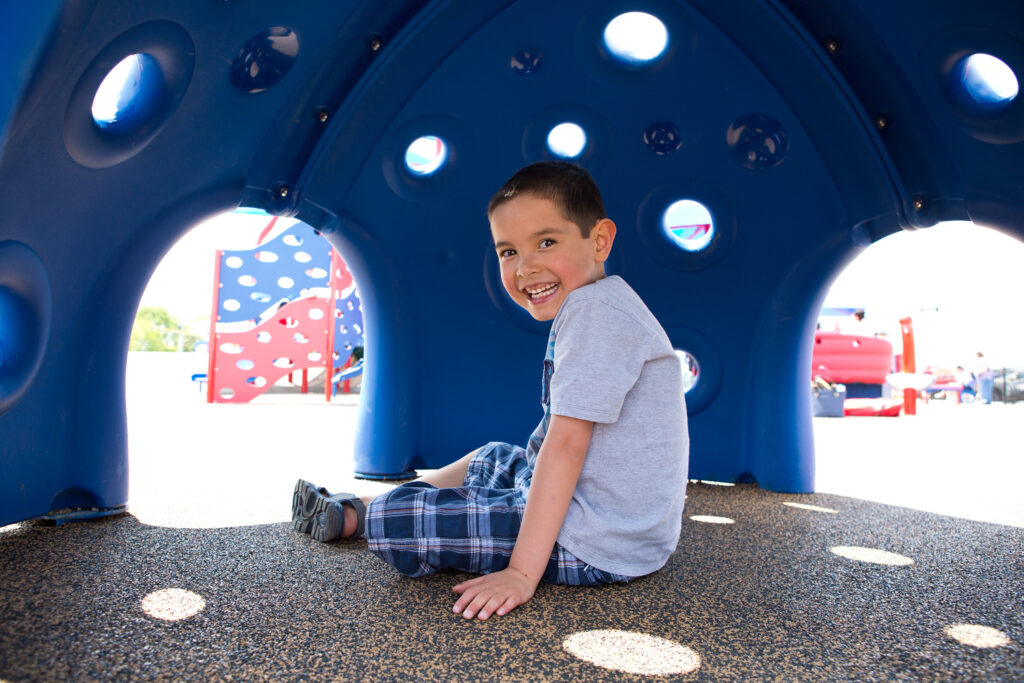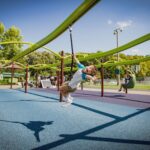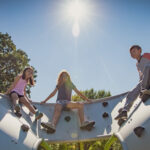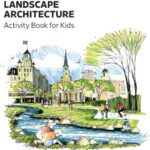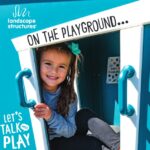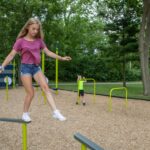We’re excited to make the benefits of a fitness facility accessible to everyone with the introduction of HealthBeat Circuit™ Activated by FitLot®. The circular design and open layout make HealthBeat Circuit Outdoor Fitness a perfect space for community circuit training classes, and the combination of equipment—for strength, cardio, balance and flexibility—creates a fully functional fitness space that can be used for a wide variety of training methods. Best of all, community-based outdoor fitness spaces create opportunities for people of all ages and abilities to achieve a more active lifestyle.
HealthBeat Circuit includes 11 fitness stations for a full-body workout. Each piece of equipment is integrated directly into the SkyWays® shade structure to provide protection from the sun while exercising. Plus, open areas within the circuit design provide comfortable space for ground work and stretching. There are 32 locations throughout HealthBeat Circuit to attach resistance bands to add even more exercise options.
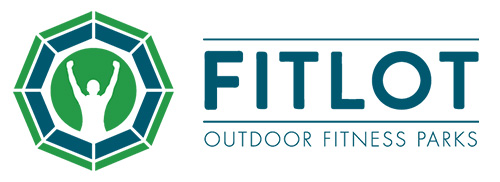
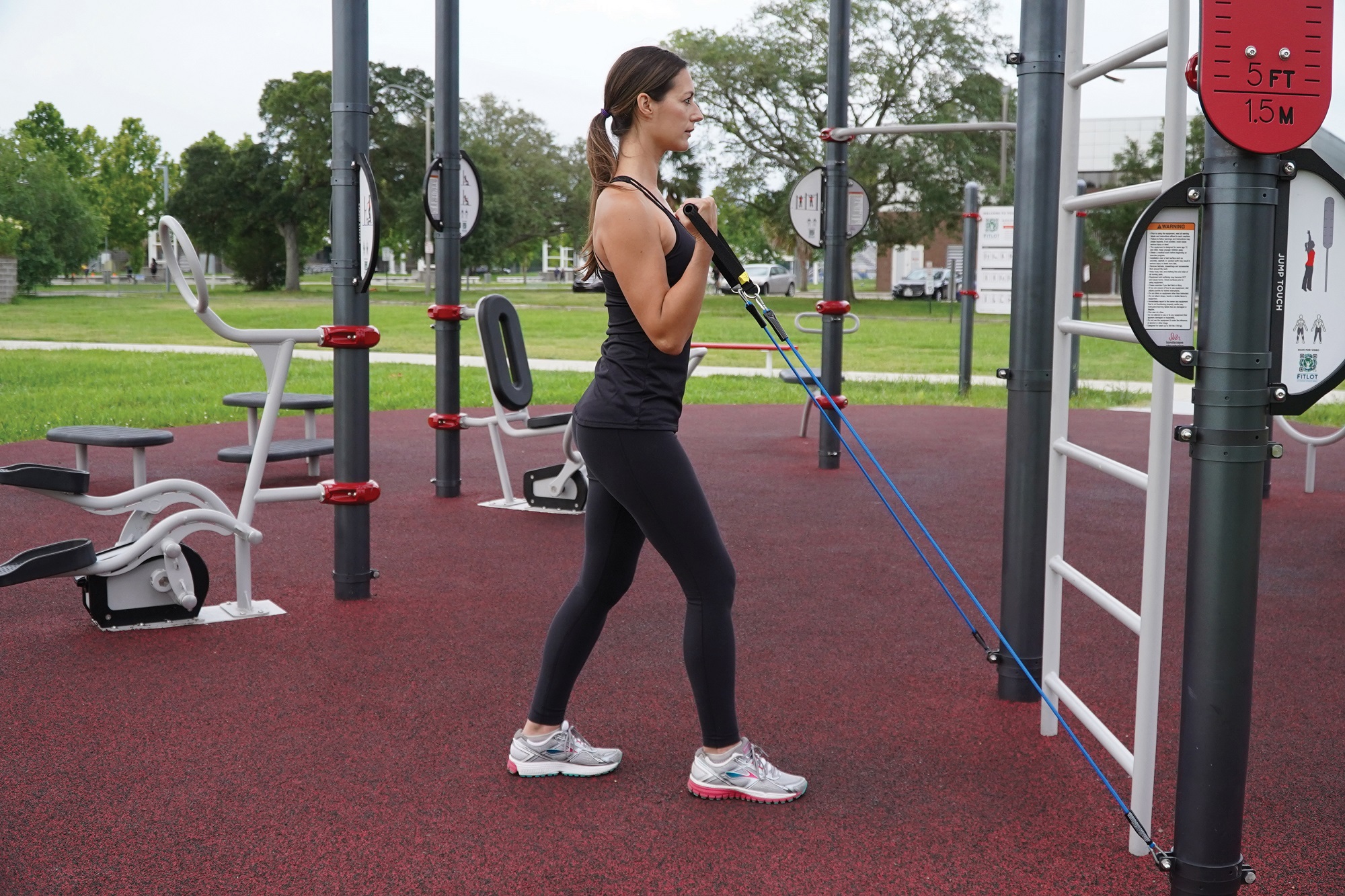
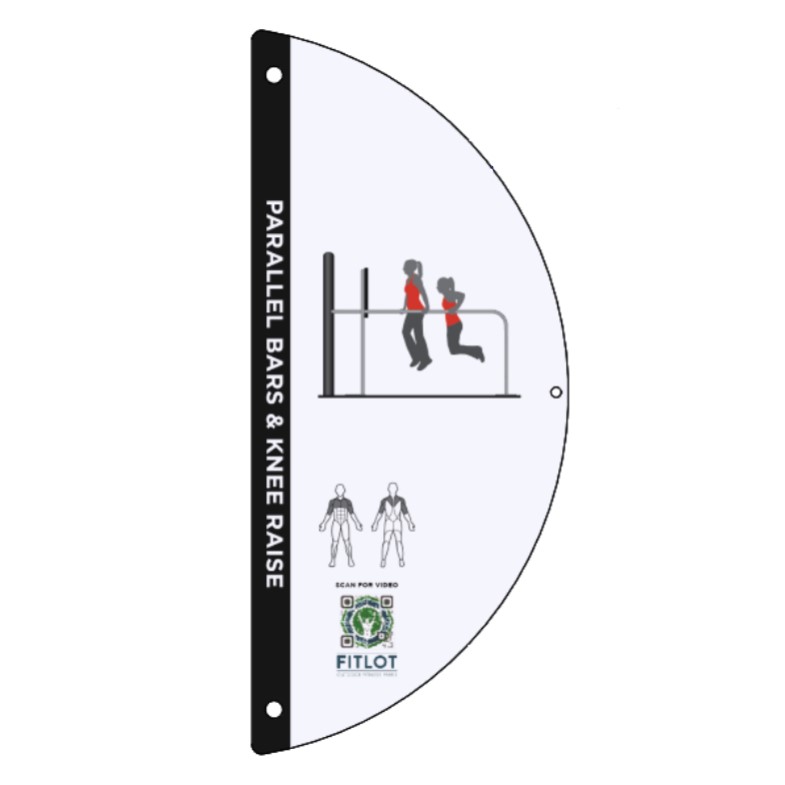
Each exercise station has signage with a scannable QR code linking the user to instructional videos on FitLot.org. The Welcome Sign also features a library of movements and additional fitness tips. While this fitness system can be used effectively without additional programming, talk with your consultant about how FitLot can further enhance and help activate HealthBeat Circuit in your community. FitLot offers a Neighborhood Coaches Training Program that teaches local fitness professionals how to lead community classes for all ages and abilities
Help build a stronger and healthier future for you community by adding HealthBeat Circuit Outdoor Fitness to your public space. Contact us to get started on your fitness park design today.

